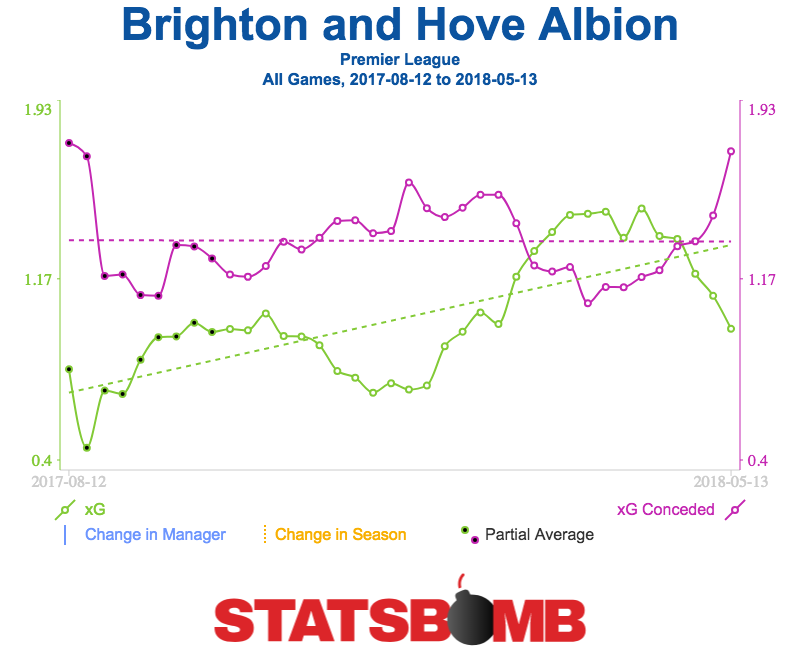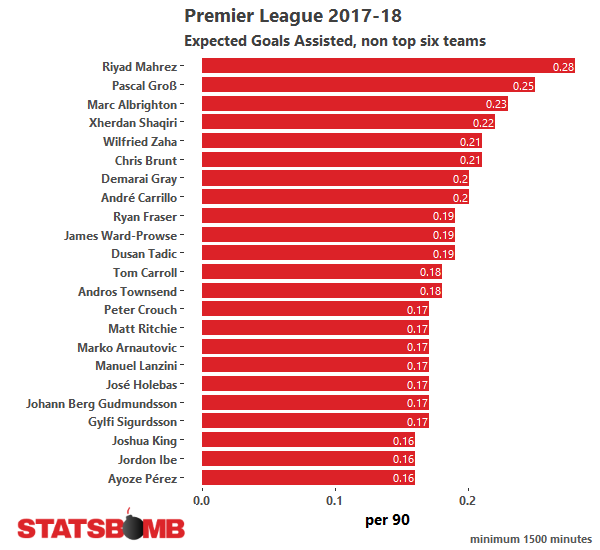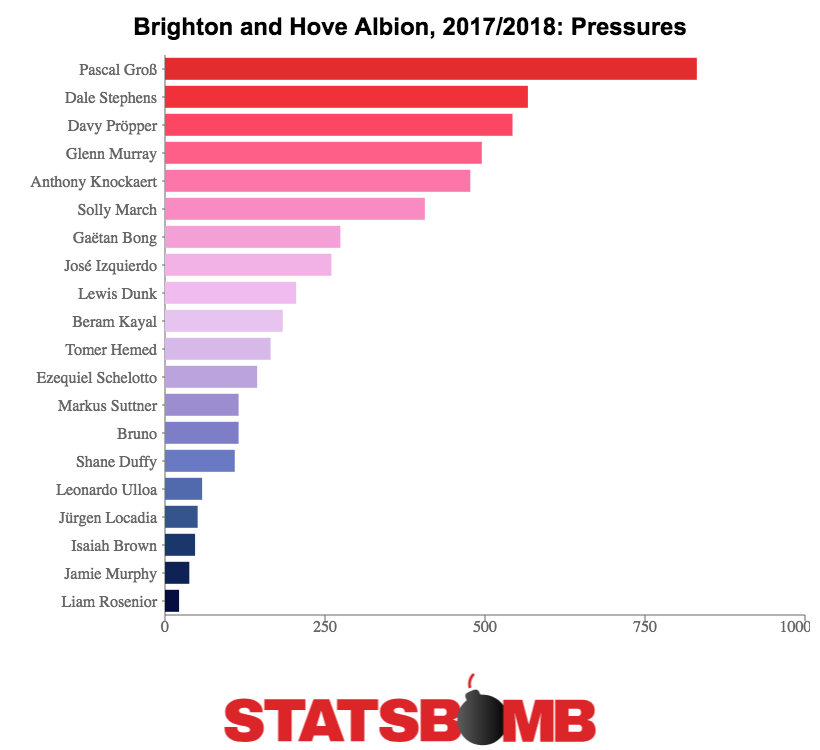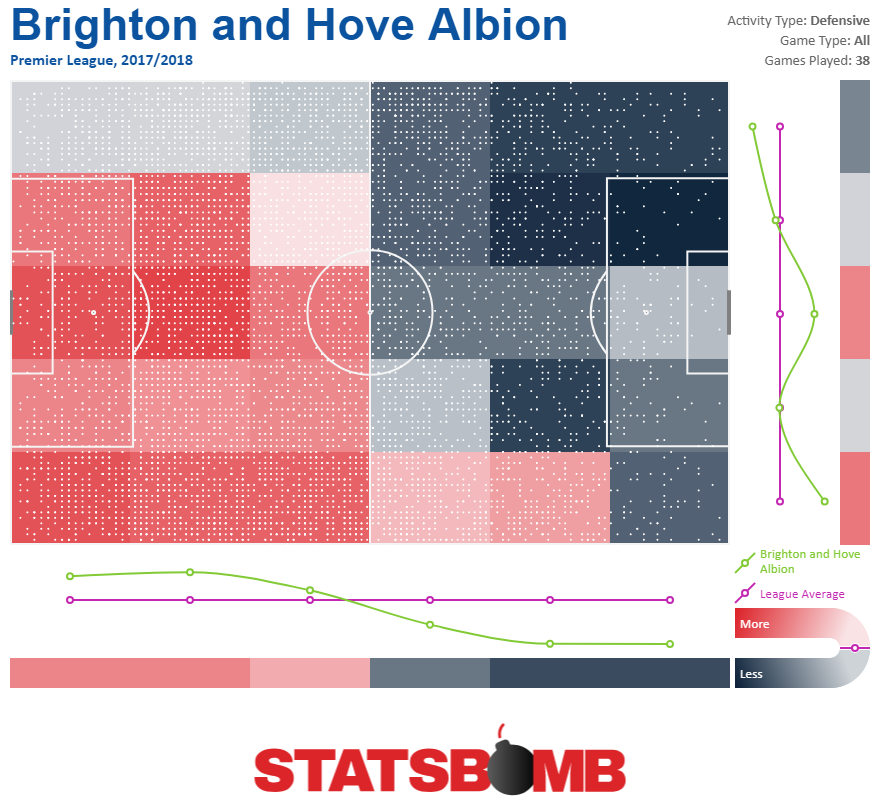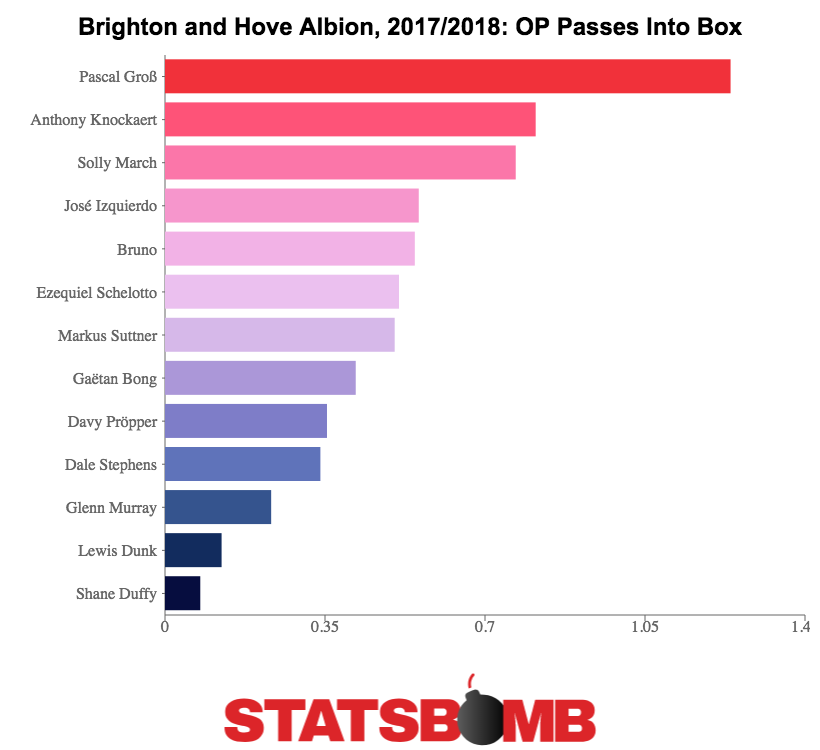By any realistic measure Barcelona had a dominant season last year. They won their domestic league by 14 points, while losing only a single game. They also won their domestic cup. But Barcelona are a club destined to fail to live up to expectations that only they can set. And what came to define their season, more than the raging success of their domestic campaign, was a stunning Champions League quarterfinal defeat to Roma. And so it is that the team which ran up 93 points in La Liga set about correcting for a failed season.
A Different Defense
Perhaps the defining tactical characteristic of Barcelona’s first season under new manager Ernesto Valverde was their somewhat more restrained defensive approach. It’s been a long time since Pep Guardiola was manning the sidelines at Barcelona, but despite the intervening years, and the four managers to have helmed the team since he left, an active counterpress had remained a huge part of the team’s success. Losing the ball had always been followed by winning it back immediately. That changed under Valverde. Their defensive actions still largely occurred in their opponents half of the field. The heatmap below shows a lot of red a long way from their own goal. 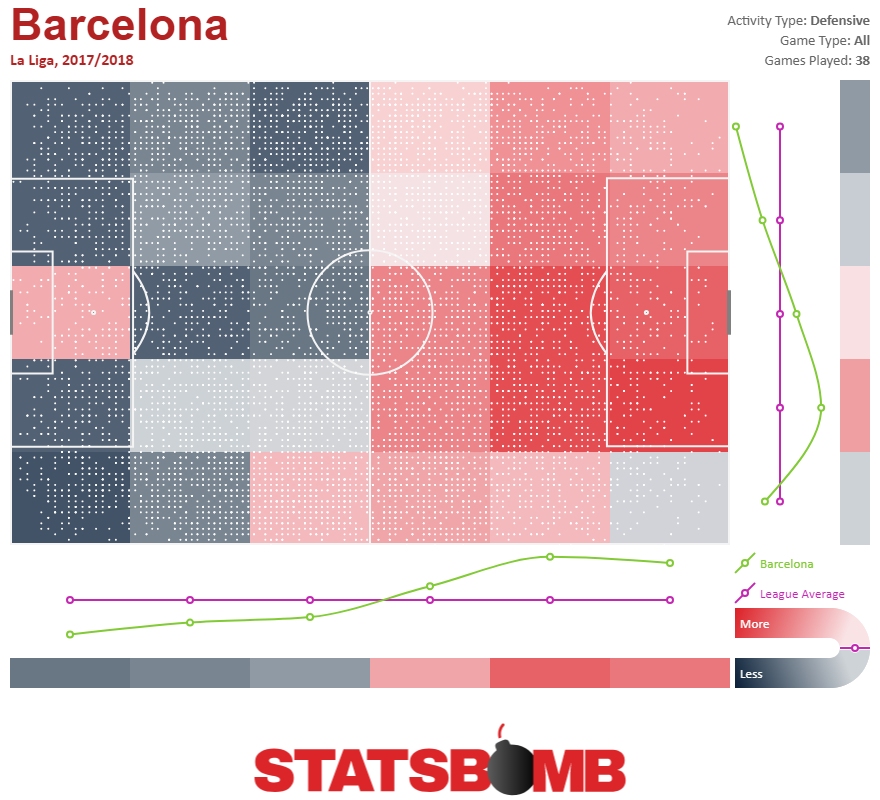 But it’s much less pronounced than the most aggressive defenses in the world. Here, for example, is what Guardiola got up to last season with Manchester City. Now, that’s a press! It's an absolutely unbreakable wall of red around the opposing team's goal.
But it’s much less pronounced than the most aggressive defenses in the world. Here, for example, is what Guardiola got up to last season with Manchester City. Now, that’s a press! It's an absolutely unbreakable wall of red around the opposing team's goal. 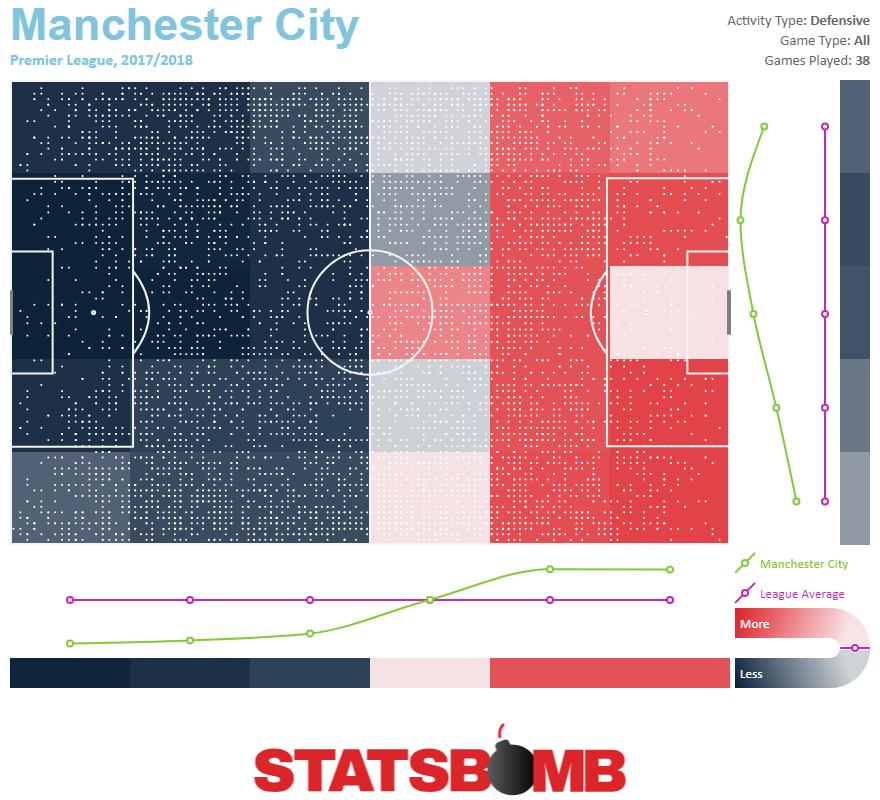 The other defensive factor that becomes apparent when looking at the heat map is how lopsided the side was. Barcelona seemed to be better and more aggressive pressuring the ball on the right side of the field than the left. There were a couple of reasons for that. The first is a personnel thing. Not infrequently Paulinho would be playing on the right. Valverde’s system was a little strange and lopsided and would often result in both Paulinho and Ivan Rakitic playing on the same side. Nominally one of them would be a winger while the other would be partnerning Sergio Busquets in midfield. Although Busquets would also, at least in possession, continue to function mostly as a single pivot. Regardless the result was a bunch of players good at being aggressive defensively on the right side of the pitch. On the left side…we need to talk about Andres Iniesta. There’s a reason last year was his final one at the top levels of the game. Iniesta has long been a difficult player to categorize, one who excels at the quieter things, and was understated at the louder things. And he still did a lot of good work in possession for Barcelona last season. But, defensively, his age showed. His declining mobility meant he simply wasn’t able to pressure the ball as frequently or effectively as he had been earlier in his career. And he noticeably dropped behind his fellow midfielders when it came to pressing the ball.
The other defensive factor that becomes apparent when looking at the heat map is how lopsided the side was. Barcelona seemed to be better and more aggressive pressuring the ball on the right side of the field than the left. There were a couple of reasons for that. The first is a personnel thing. Not infrequently Paulinho would be playing on the right. Valverde’s system was a little strange and lopsided and would often result in both Paulinho and Ivan Rakitic playing on the same side. Nominally one of them would be a winger while the other would be partnerning Sergio Busquets in midfield. Although Busquets would also, at least in possession, continue to function mostly as a single pivot. Regardless the result was a bunch of players good at being aggressive defensively on the right side of the pitch. On the left side…we need to talk about Andres Iniesta. There’s a reason last year was his final one at the top levels of the game. Iniesta has long been a difficult player to categorize, one who excels at the quieter things, and was understated at the louder things. And he still did a lot of good work in possession for Barcelona last season. But, defensively, his age showed. His declining mobility meant he simply wasn’t able to pressure the ball as frequently or effectively as he had been earlier in his career. And he noticeably dropped behind his fellow midfielders when it came to pressing the ball. 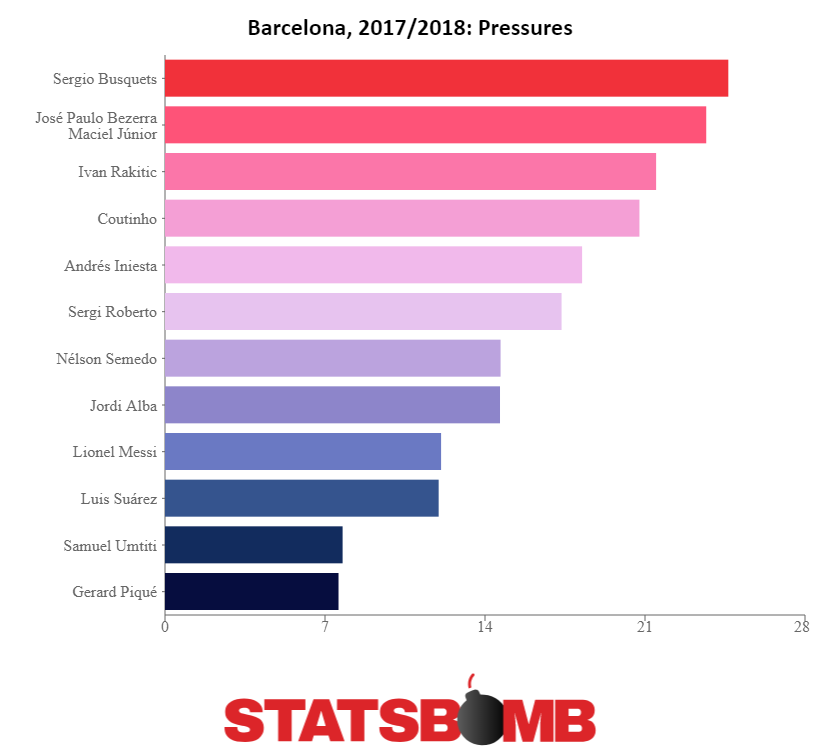 Iniesta will obviously be missed, but this season his absence will likely upgrade the team’s defensive solidity. On top of that, Barcelona acquired Arturo Vidal from Bayern Munich, and shipped Paulinho back from whence he came. Pauliho proved a useful, if limited, player, both adding defensive stability and goals to the side, but Vidal does all the things that Paulinho was good at but better, and he also does all the things that Paulinho was bad at at a world class level. At 31 years old Vidal probably doesn’t have that many great years left, but right now he remains one of the best all around midfielders in the game. Expect Barcelona’s defense to be better this year than last.
Iniesta will obviously be missed, but this season his absence will likely upgrade the team’s defensive solidity. On top of that, Barcelona acquired Arturo Vidal from Bayern Munich, and shipped Paulinho back from whence he came. Pauliho proved a useful, if limited, player, both adding defensive stability and goals to the side, but Vidal does all the things that Paulinho was good at but better, and he also does all the things that Paulinho was bad at at a world class level. At 31 years old Vidal probably doesn’t have that many great years left, but right now he remains one of the best all around midfielders in the game. Expect Barcelona’s defense to be better this year than last.
Messi Facilitates the Attack
Lionel Messi. You might have heard of him. He’s pretty good and stuff. He’s 31 now, and evolving into what will likely be his final form. Last season he became an extraordinary facilitator, who just happens to score a ton of goals. 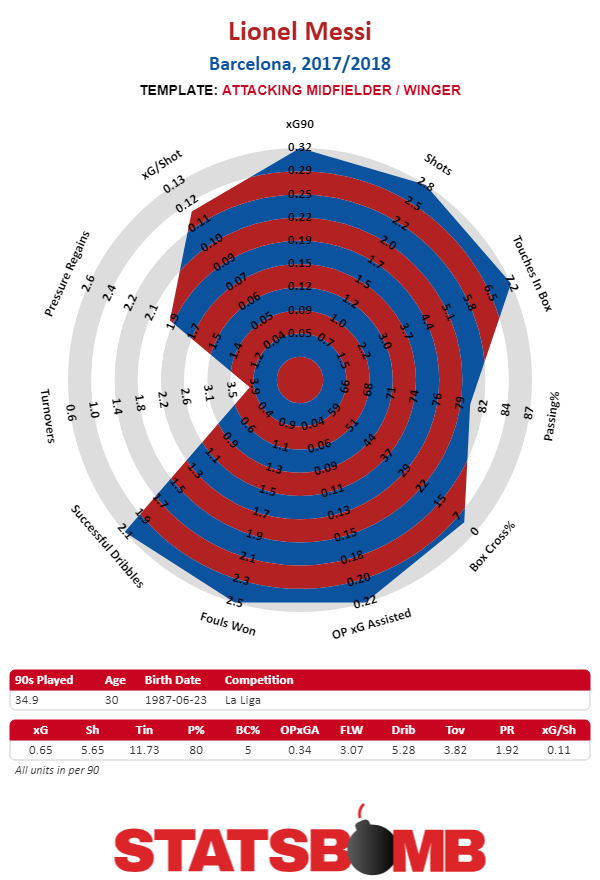 When Barcelona were running out a front three of Neymar, Messi and Luis Suarez, the creative duties were largely split between the two wingers with whoever didn’t have the ball at their feet joining Suarez to torture opposing back lines. With Neymar gone, Messi just did all of the creative work. He led the team in assists (among players who played at least 1000 minutes) with 0.37 per 90 minutes which was right in line with his expected goals assisted of 0.38. He was also second on the team in deep progressions per 90, that is, bringing the ball into the final third either by passing or carrying it, with 10.37 (Iniesta was first at 12.87). Often times, Messi and Suarez were listed as a pair of strikers, but obviously their roles differed dramatically. Suarez led the line and Messi dropped into midfield to get the ball. Accordingly Suarez had just under 19 touches in the penalty area per game and Messi had just under 12 (although that was still second highest on the team). Oh, and in addition to all that passing, Messi just managed a casual 32 non-penalty league goals. One potential concern here is that given his duties as a facilitator, Messi’s goals came from a weaker selection of shots than he’s historically taken. His expected goal tally was only 22.61, and even perhaps the greatest player of all time isn’t entirely immune from the laws of finishing gravity. This year it seems likely that either his goal scoring will end up declining somewhat or the system will end up being tweaked to relieve him of some ball progression duties in order to let him get in better positions to score.
When Barcelona were running out a front three of Neymar, Messi and Luis Suarez, the creative duties were largely split between the two wingers with whoever didn’t have the ball at their feet joining Suarez to torture opposing back lines. With Neymar gone, Messi just did all of the creative work. He led the team in assists (among players who played at least 1000 minutes) with 0.37 per 90 minutes which was right in line with his expected goals assisted of 0.38. He was also second on the team in deep progressions per 90, that is, bringing the ball into the final third either by passing or carrying it, with 10.37 (Iniesta was first at 12.87). Often times, Messi and Suarez were listed as a pair of strikers, but obviously their roles differed dramatically. Suarez led the line and Messi dropped into midfield to get the ball. Accordingly Suarez had just under 19 touches in the penalty area per game and Messi had just under 12 (although that was still second highest on the team). Oh, and in addition to all that passing, Messi just managed a casual 32 non-penalty league goals. One potential concern here is that given his duties as a facilitator, Messi’s goals came from a weaker selection of shots than he’s historically taken. His expected goal tally was only 22.61, and even perhaps the greatest player of all time isn’t entirely immune from the laws of finishing gravity. This year it seems likely that either his goal scoring will end up declining somewhat or the system will end up being tweaked to relieve him of some ball progression duties in order to let him get in better positions to score. 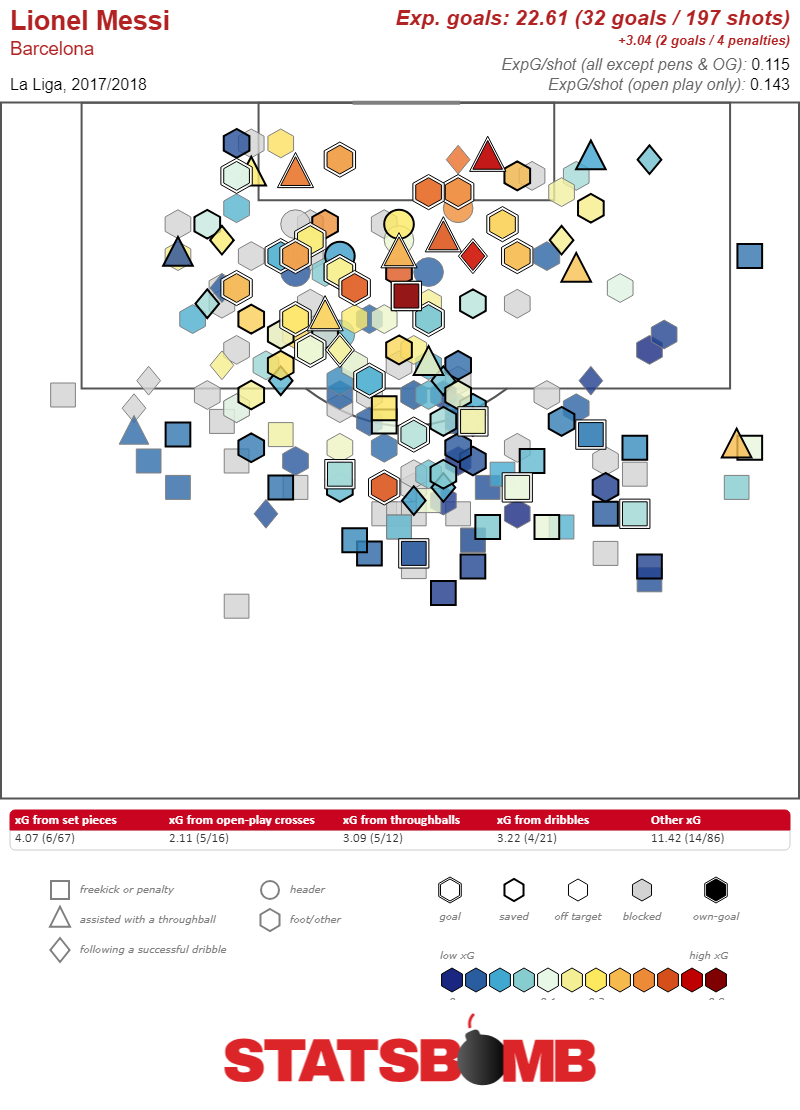 The main beneficiary of Messi’s passing was Suarez. Suarez had an interesting season. He scored 24 non-penalty goals from an expected goal total of 22.1. That’s a really good return, and a mild overperformance of his xG. And yet, he, like so many strikers before him, felt worse. It seemed like he missed buckets of good chances, wasting the genius passing of Messi that set him free time and again. And to a certain point, that’s true. He missed a lot of good chances.
The main beneficiary of Messi’s passing was Suarez. Suarez had an interesting season. He scored 24 non-penalty goals from an expected goal total of 22.1. That’s a really good return, and a mild overperformance of his xG. And yet, he, like so many strikers before him, felt worse. It seemed like he missed buckets of good chances, wasting the genius passing of Messi that set him free time and again. And to a certain point, that’s true. He missed a lot of good chances. 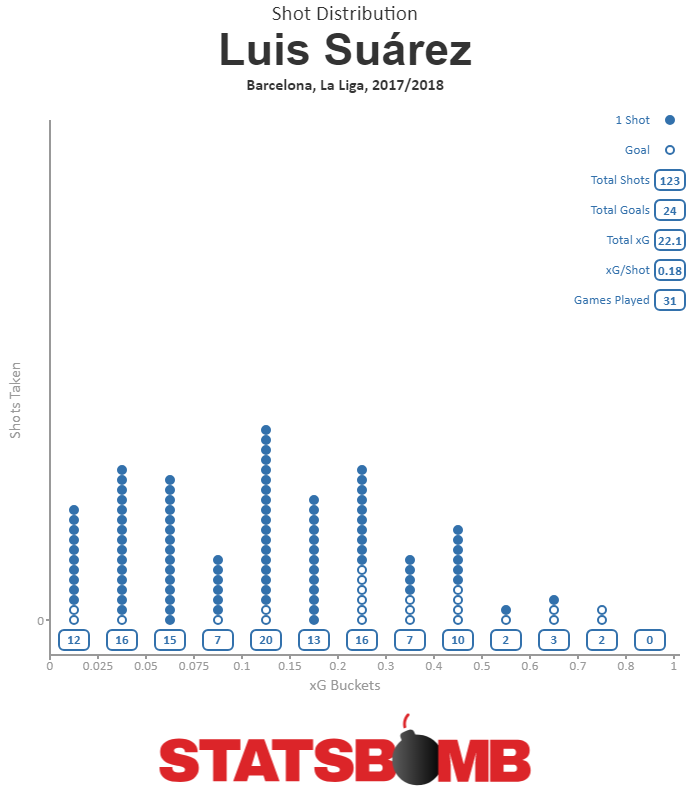 He missed 22 shots with an xG of over 0.2. That’s enough to stick in your brain. It’s also what happens when a player has an extremely high xg/shot. Because Suarez had lots of great looks at goal he both scored as many goals as we’d expect and missed more great chances than most players in the world will (because he had more great chances than most players in the world will). Despite Suarez and Messi having the scoring seasons they did, Barcelona’s attack remained limited. In large part because their third most prolific scorer last year, both in total goals and in expected goals was Paulinho, which is….not great. And the xG gaps were large, both from the two goal scorers to Paulinho, and from the midfielder to everybody else.
He missed 22 shots with an xG of over 0.2. That’s enough to stick in your brain. It’s also what happens when a player has an extremely high xg/shot. Because Suarez had lots of great looks at goal he both scored as many goals as we’d expect and missed more great chances than most players in the world will (because he had more great chances than most players in the world will). Despite Suarez and Messi having the scoring seasons they did, Barcelona’s attack remained limited. In large part because their third most prolific scorer last year, both in total goals and in expected goals was Paulinho, which is….not great. And the xG gaps were large, both from the two goal scorers to Paulinho, and from the midfielder to everybody else. 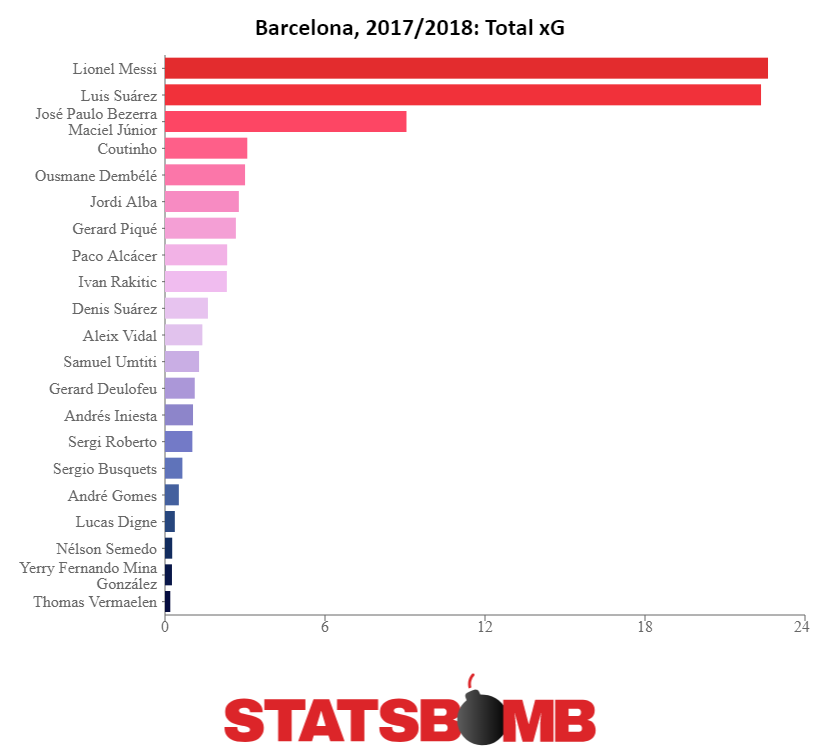 This year things should be better. For starters, there’s Vidal who we already talked about. Then there’s Philippe Coutinho who arrived last January and after half a season of bouncing around the formation should finally get to settle into his role as Iniesta heir apparent. Ousmane Dembele, who never really got off the ground last season, thanks to chronic hamstring problems, should bounce back. He’s only 21 years old, he’s got buckets of talent and is as unstoppable as it gets with the ball at his feet. If the rest of his game can catch up a little, he absolutely provides the kind of creative thrust that Barcelona missed last season. And finally, Malcom arrived from Bordeaux and he provides another young, dynamic wide scoring option. He’s a little bit wild, and his shot selection leaves a lot do be desired, but the talent is undeniable.
This year things should be better. For starters, there’s Vidal who we already talked about. Then there’s Philippe Coutinho who arrived last January and after half a season of bouncing around the formation should finally get to settle into his role as Iniesta heir apparent. Ousmane Dembele, who never really got off the ground last season, thanks to chronic hamstring problems, should bounce back. He’s only 21 years old, he’s got buckets of talent and is as unstoppable as it gets with the ball at his feet. If the rest of his game can catch up a little, he absolutely provides the kind of creative thrust that Barcelona missed last season. And finally, Malcom arrived from Bordeaux and he provides another young, dynamic wide scoring option. He’s a little bit wild, and his shot selection leaves a lot do be desired, but the talent is undeniable. 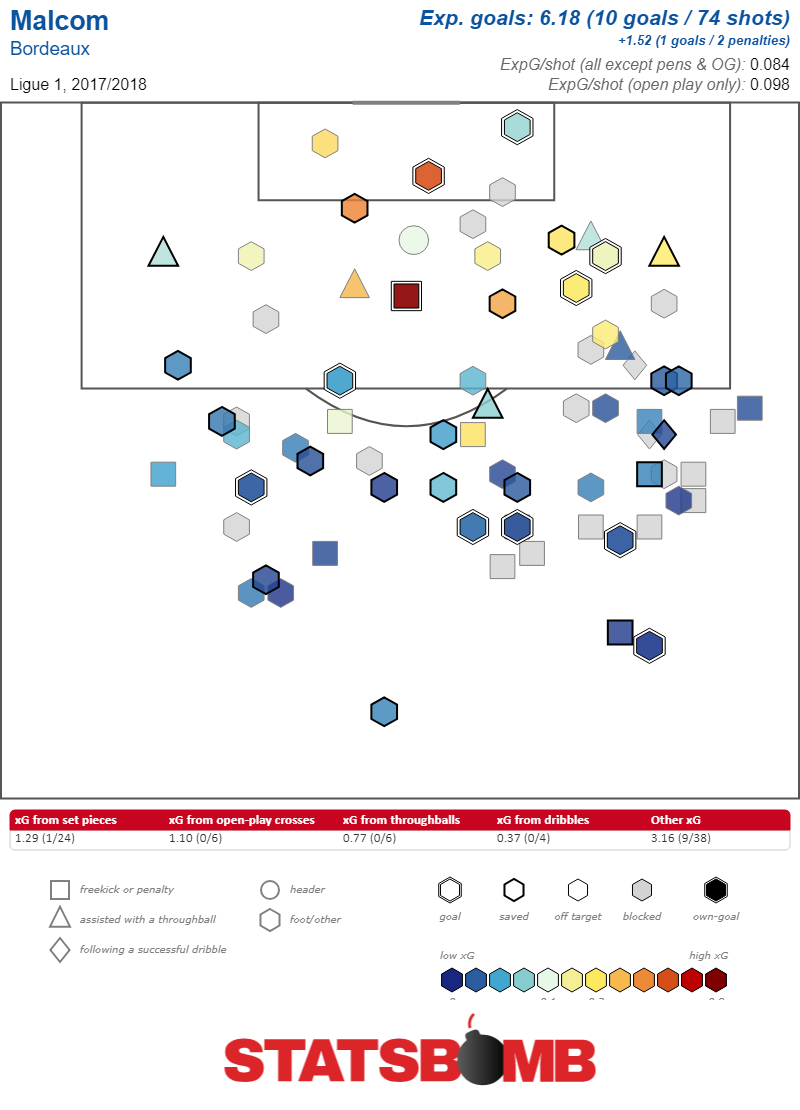
Focused on the Now
There are a lot of reasons to be concerned about Barcelona’s future. The core of their team is all over 30 with Messi, Suarez, Rakitic, Pique, Busquets, and now Vidal all being closer to the down side of their careers than their peaks. Their most exciting younger player, Dembele still needs to develop, the same goes for Malcom. They might not. Really only Coutinho, centerback Samuel Umtiti, and fullback Jordi Alba are in their prime years (and that's being generous to Alba at 29). Father time is licking his chops waiting to get a hold of this side. But, right now, Barcelona look like they could be great. They’ve upgraded where they need to upgrade, added attacking options to a squad in desperate need of them, and are improving from what was already an extremely strong foundation. Take into account that Cristiano Ronaldo is now plying his trade in Italy, and not at Real Madrid and you’ve got a Barcelona that will be an overwhelming favorite to win domestically. Then again, for Barcelona, winning the league isn’t success, it’s the bare minimum they’ll accept. Header image courtesy of the Press Association
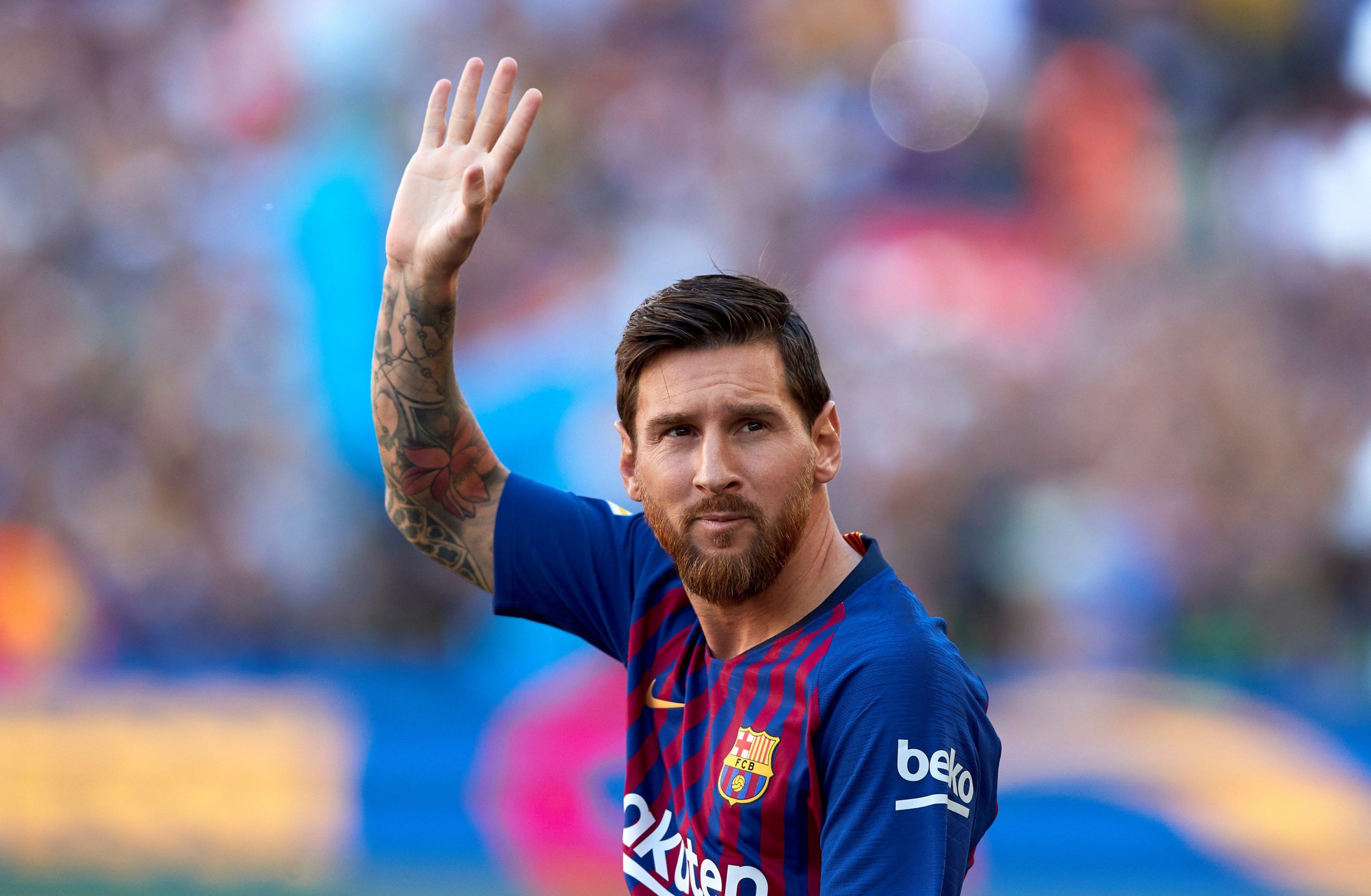
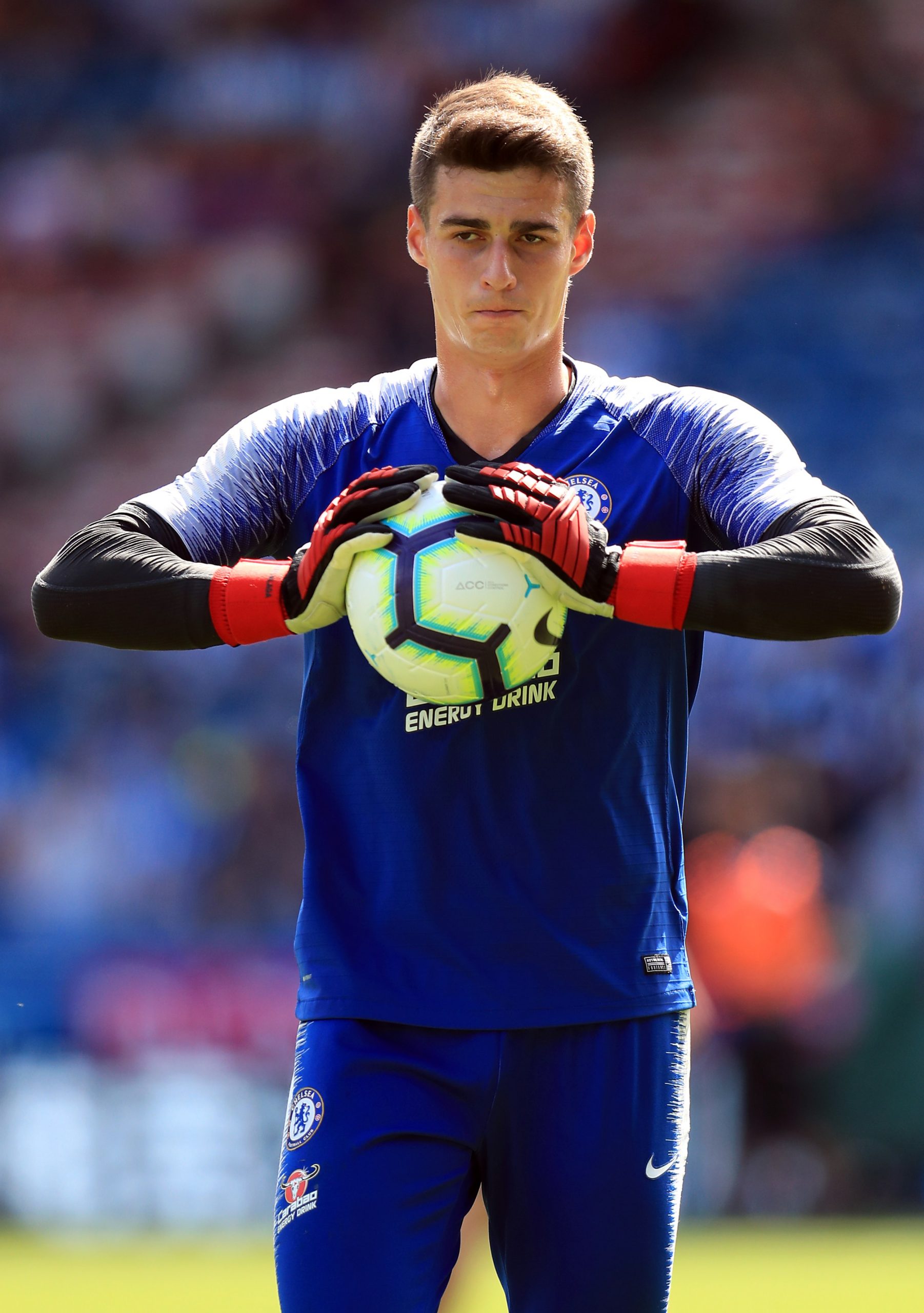
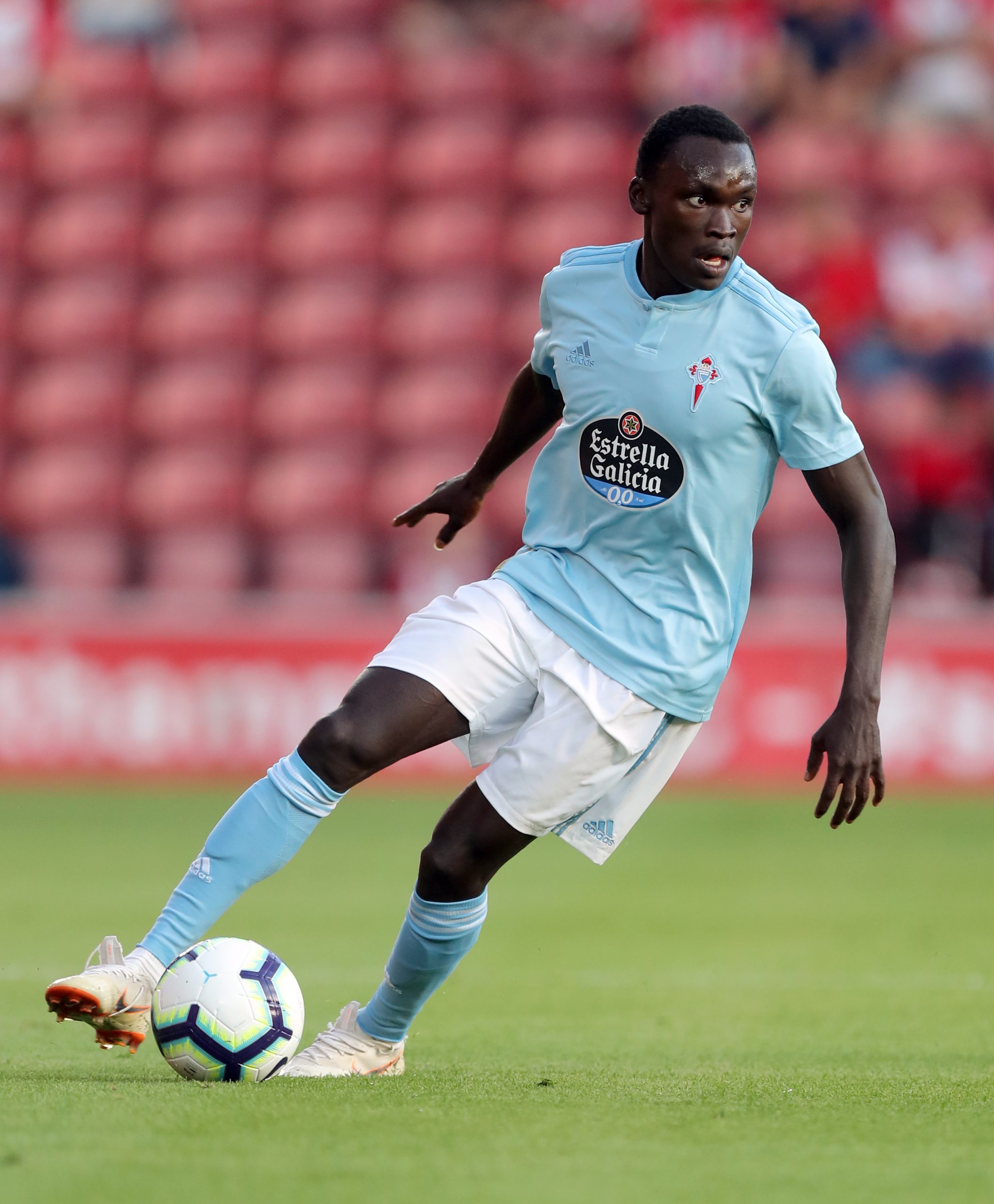
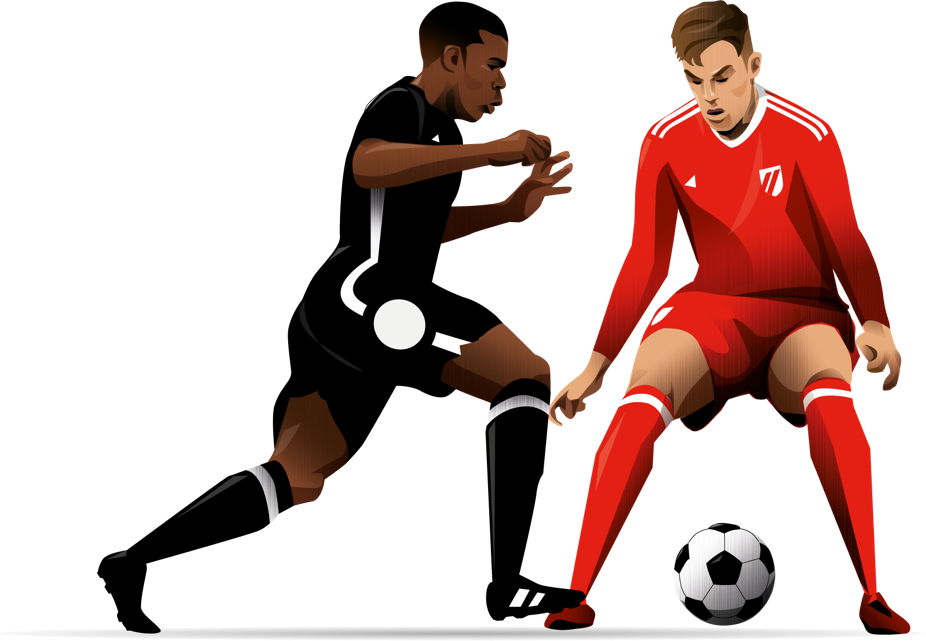
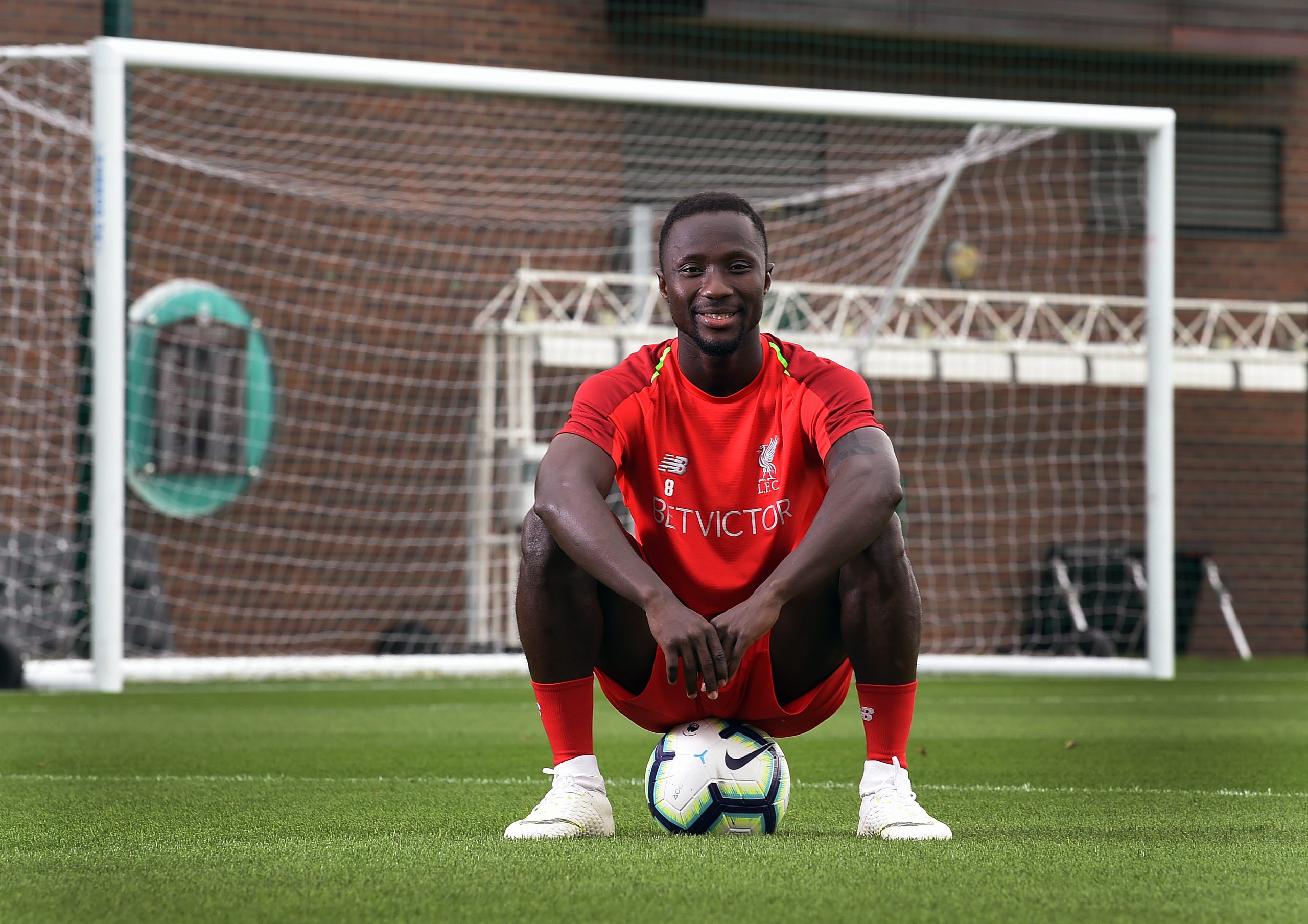
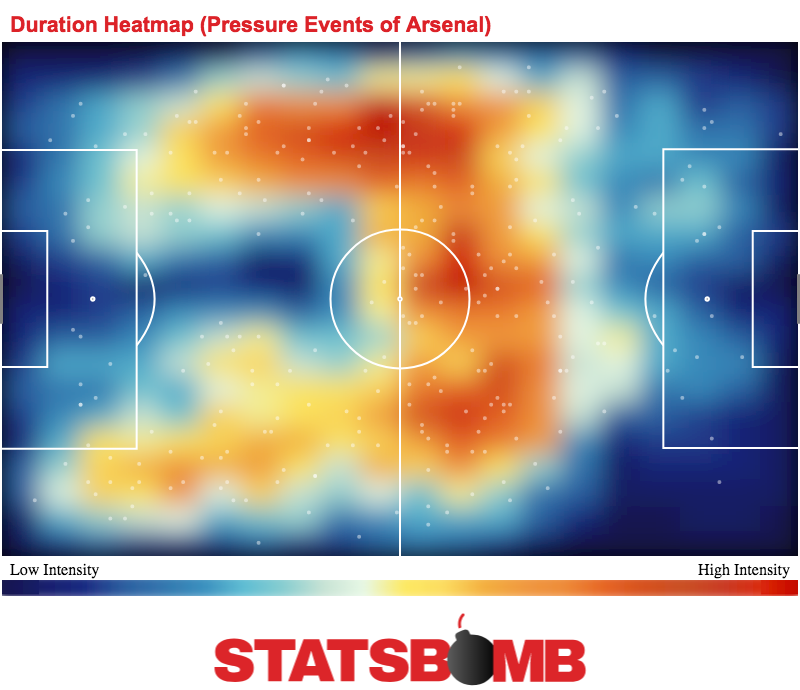
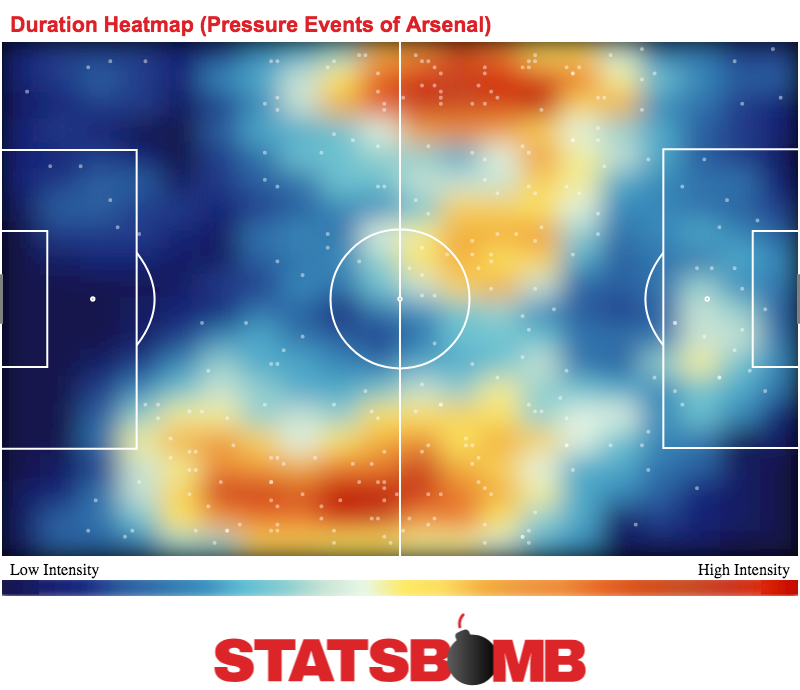
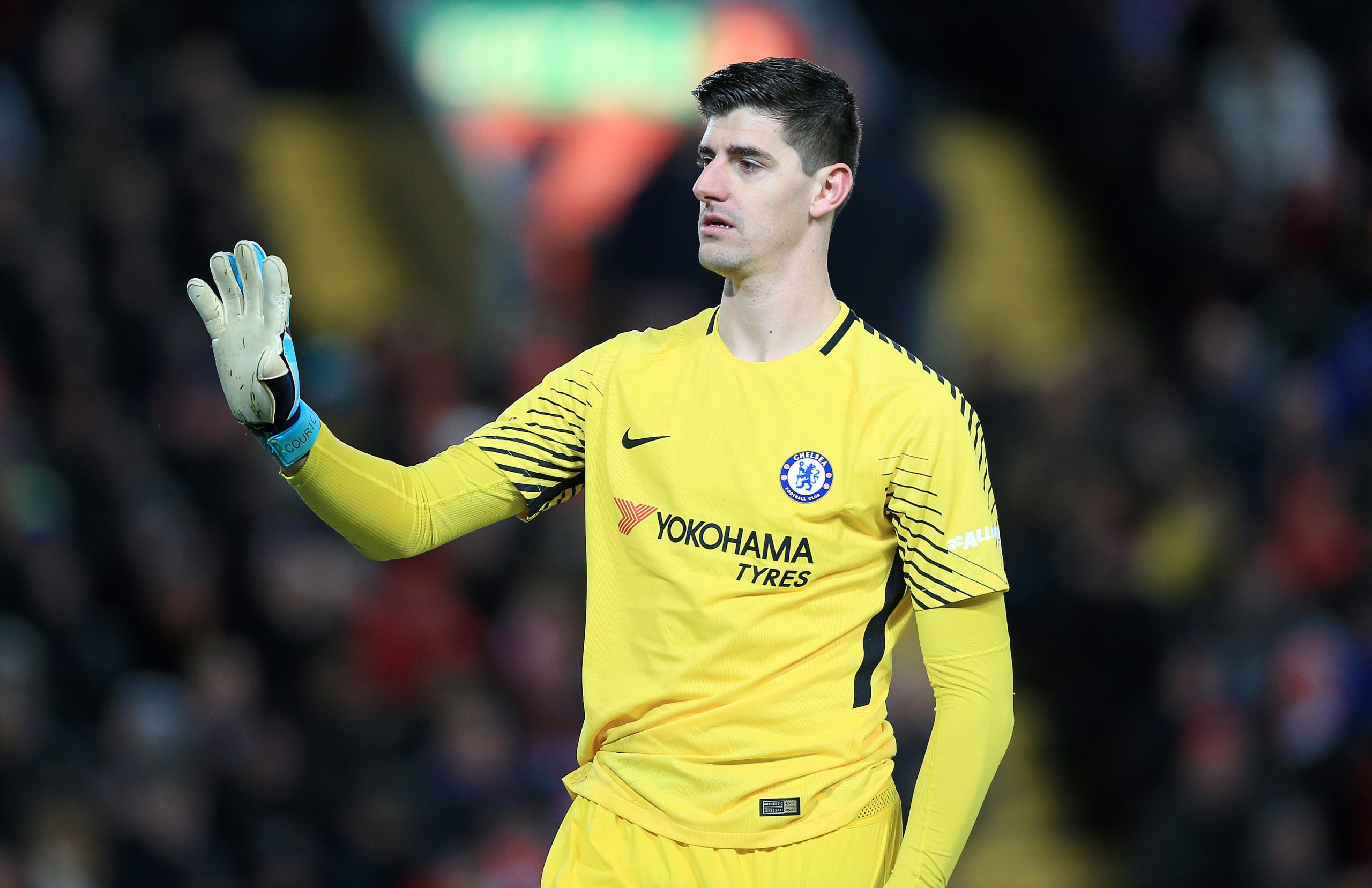
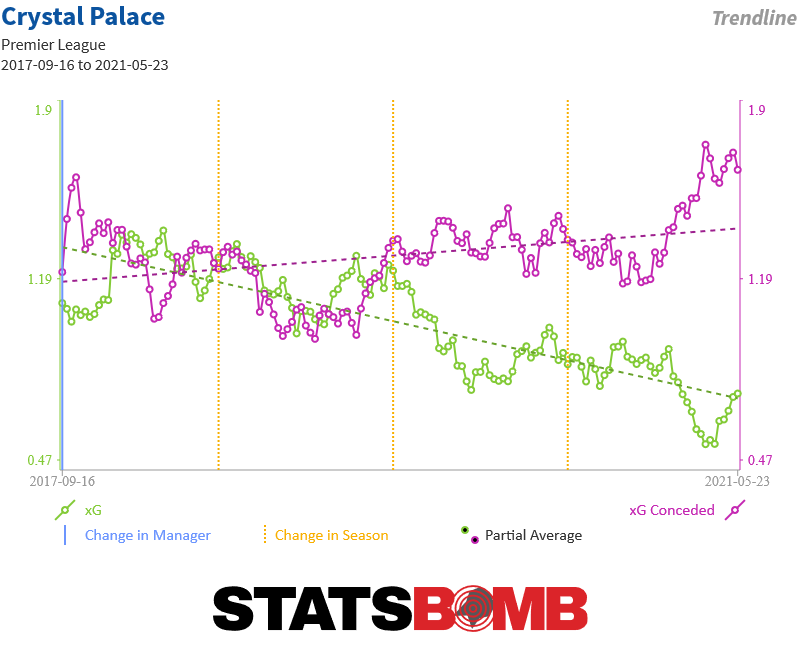
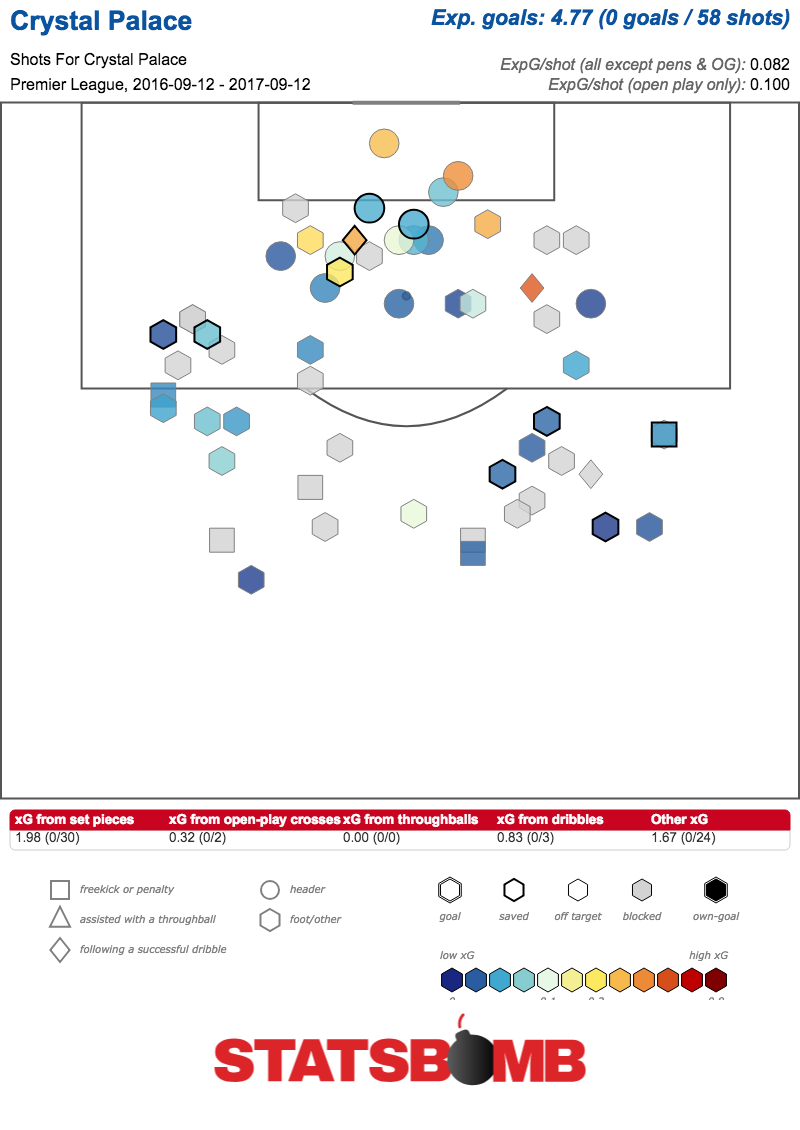
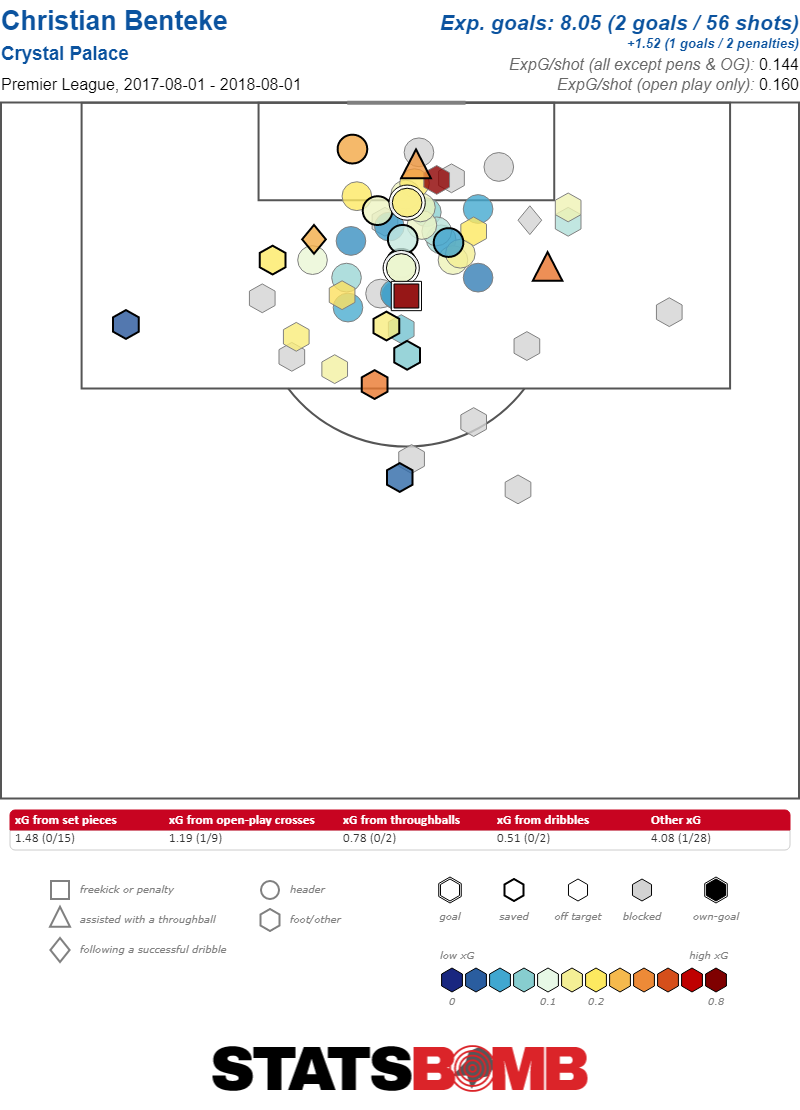
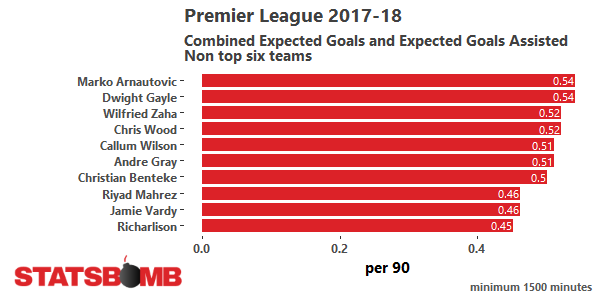
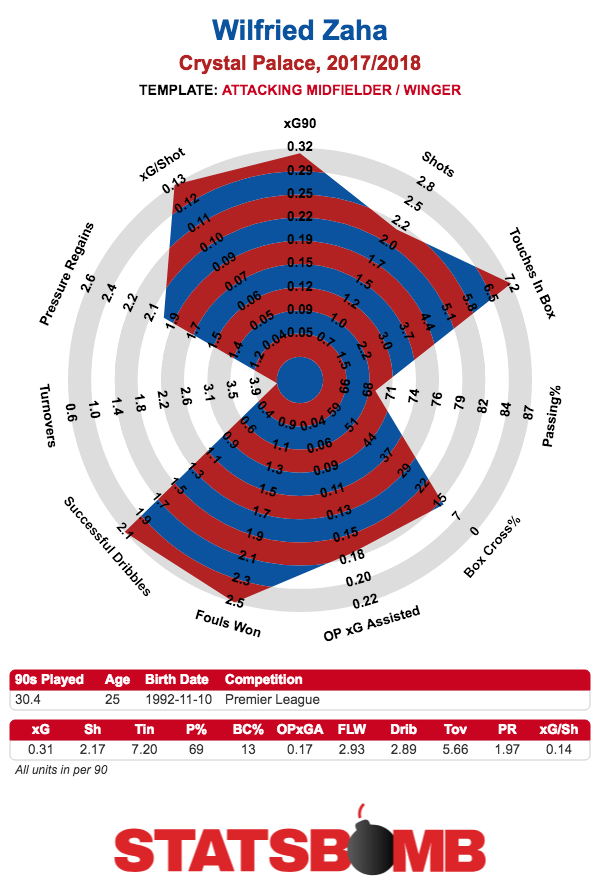
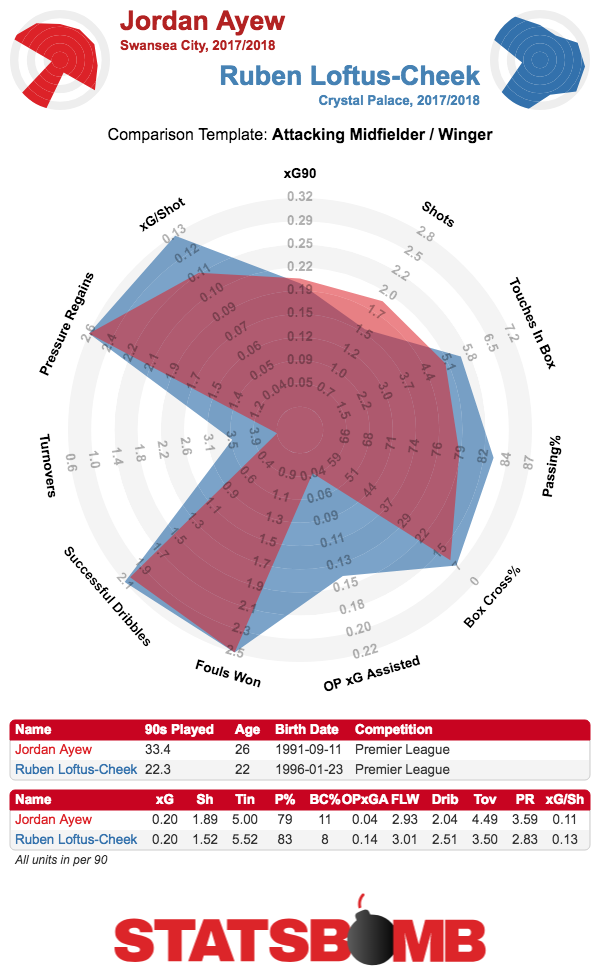

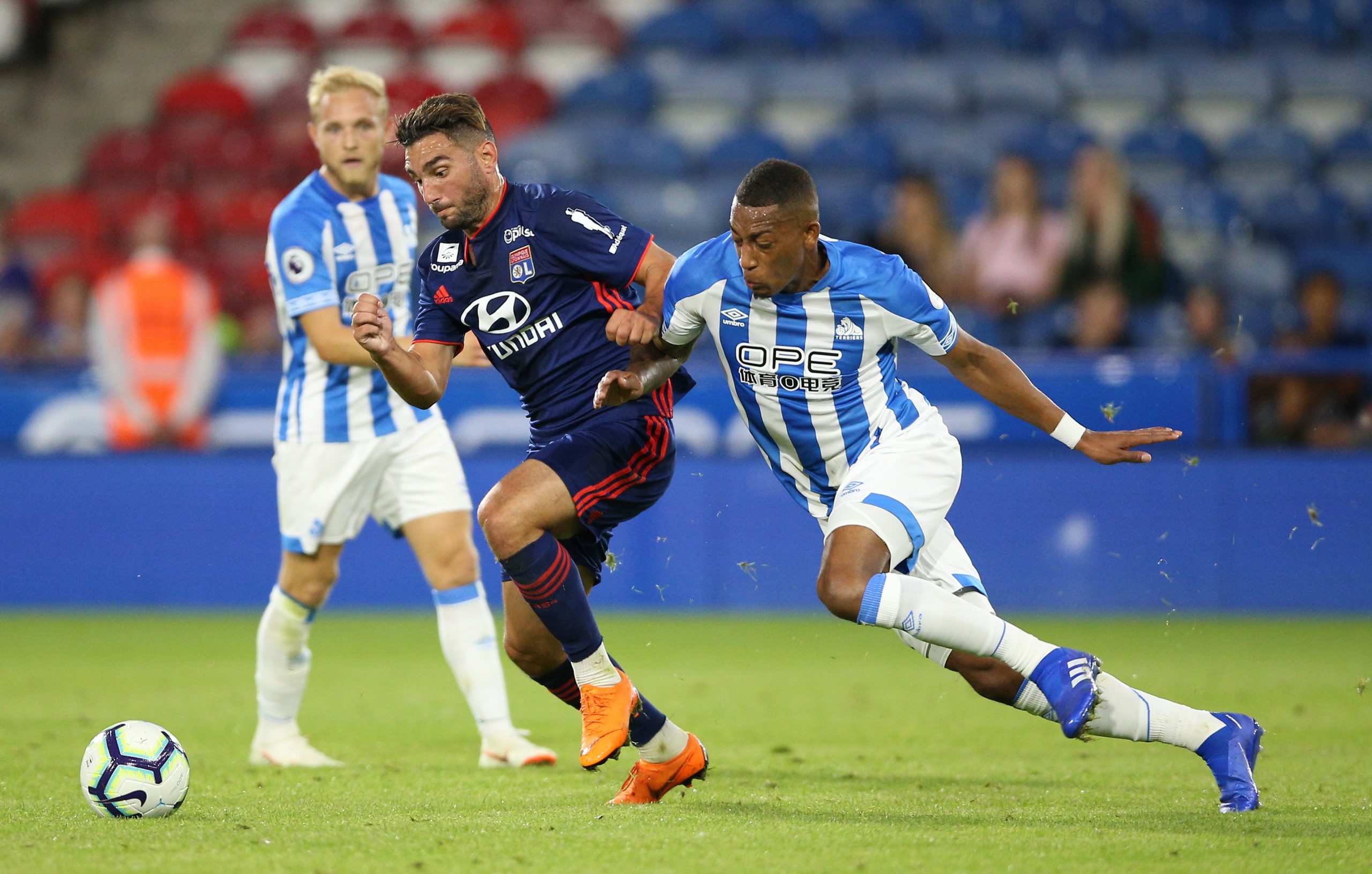
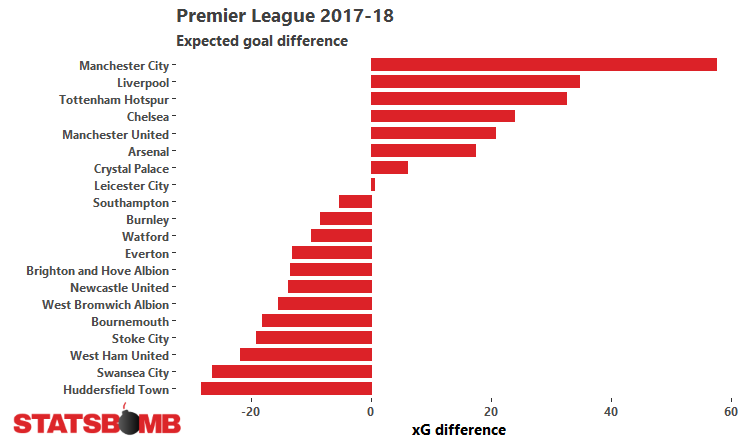 Huddersfield tended to use a 4-2-3-1 formation in most matches and switched to a 5-3-2 against the 'top 6' teams. Their average defensive event location was ninth furthest from their own goal in the league but this was not an aggressive all over the pitch counter pressing style that the oft-used narrative of manager David Wagner's long professional relationship and friendship with Liverpool boss Jürgen Klopp may have led some to imagine. Huddersfield Town, in the 2017/18 season, tended to concede the opposing team's half and then press, individually man on man, only once the ball entered their own half and particularly if the intended ball recipient had their back to goal. If this press was broken, or the opposition maintained possession in Huddersfield Town's half, they retreated into a very deep block which helped them to allow both the eighth fewest deep completions (passes completed within twenty metres of their goal) and the eighth fewest non penalty shots against; ranking behind only the 'top 6' and Watford in both of these areas.
Huddersfield tended to use a 4-2-3-1 formation in most matches and switched to a 5-3-2 against the 'top 6' teams. Their average defensive event location was ninth furthest from their own goal in the league but this was not an aggressive all over the pitch counter pressing style that the oft-used narrative of manager David Wagner's long professional relationship and friendship with Liverpool boss Jürgen Klopp may have led some to imagine. Huddersfield Town, in the 2017/18 season, tended to concede the opposing team's half and then press, individually man on man, only once the ball entered their own half and particularly if the intended ball recipient had their back to goal. If this press was broken, or the opposition maintained possession in Huddersfield Town's half, they retreated into a very deep block which helped them to allow both the eighth fewest deep completions (passes completed within twenty metres of their goal) and the eighth fewest non penalty shots against; ranking behind only the 'top 6' and Watford in both of these areas. 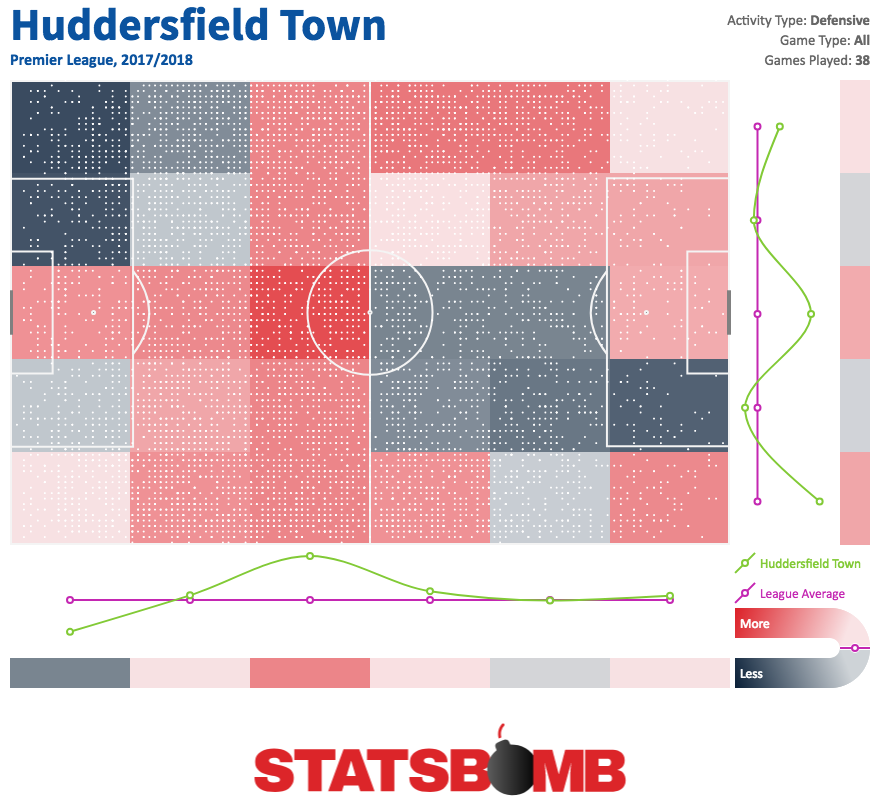 In fact, five teams conceded more goals than the Terriers and, incredibly, only seven teams kept more clean sheets. The problem for Huddersfield Town was that the chances they did allow were very good ones. The average xG open play shot they faced was 0.13 and as a result, despite limiting the number of shots they faced, they conceded the fifth highest non penalty xG per game in the league. As well as the style of press meaning that it was relatively easily evaded by quick players and good passing teams, they were not helped by a real lack of mobility in their central midfield. Aaron Mooy was fourth in the league for successful passes into the final third for teams outside the 'top 6' but lacks the athleticism to play as part of a defensive double pivot at this level and his usual partner Jonathan Hogg, while possessing the name and appearance of a middle manager, isn't equipped to manage the middle of Huddersfield Town's defensive half on his own. Against the bigger teams Wagner did include young Dane Philip Billing as a third midfielder but, while he appears to be a good passer and his height was a welcome addition given Huddersfield Town were among the worst in terms of xG for and against from set pieces in the league. They really required more of a positionally aware ball winner in front of the defence to help them avoid lapses of the sort that led to them losing three or more goals in eight separate matches last season.
In fact, five teams conceded more goals than the Terriers and, incredibly, only seven teams kept more clean sheets. The problem for Huddersfield Town was that the chances they did allow were very good ones. The average xG open play shot they faced was 0.13 and as a result, despite limiting the number of shots they faced, they conceded the fifth highest non penalty xG per game in the league. As well as the style of press meaning that it was relatively easily evaded by quick players and good passing teams, they were not helped by a real lack of mobility in their central midfield. Aaron Mooy was fourth in the league for successful passes into the final third for teams outside the 'top 6' but lacks the athleticism to play as part of a defensive double pivot at this level and his usual partner Jonathan Hogg, while possessing the name and appearance of a middle manager, isn't equipped to manage the middle of Huddersfield Town's defensive half on his own. Against the bigger teams Wagner did include young Dane Philip Billing as a third midfielder but, while he appears to be a good passer and his height was a welcome addition given Huddersfield Town were among the worst in terms of xG for and against from set pieces in the league. They really required more of a positionally aware ball winner in front of the defence to help them avoid lapses of the sort that led to them losing three or more goals in eight separate matches last season. 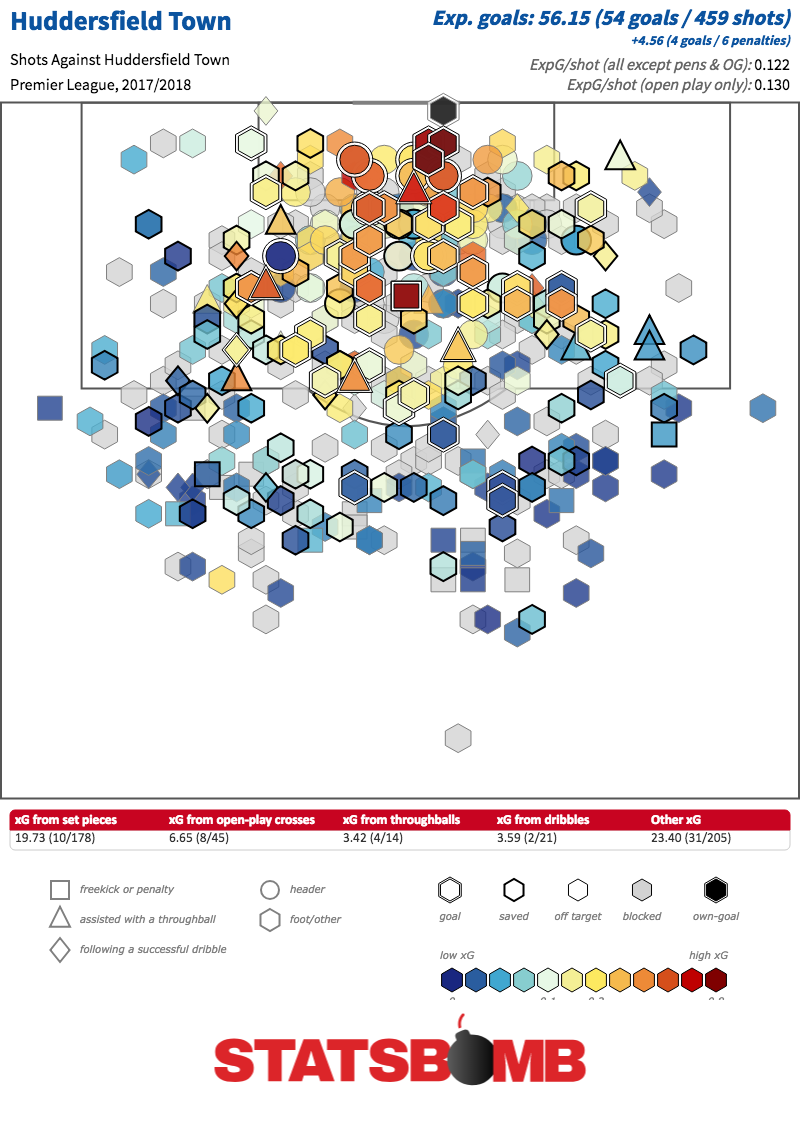 If, in terms of the way they defend, Klopp's Liverpool are Heavy Metal and Sean Dyche's Burnley are a Spector-esque Wall of Sound then Wagner's Terriers could be considered an unadventurous soft rock group - a bit predictable and about to face difficult second album syndrome.
If, in terms of the way they defend, Klopp's Liverpool are Heavy Metal and Sean Dyche's Burnley are a Spector-esque Wall of Sound then Wagner's Terriers could be considered an unadventurous soft rock group - a bit predictable and about to face difficult second album syndrome. 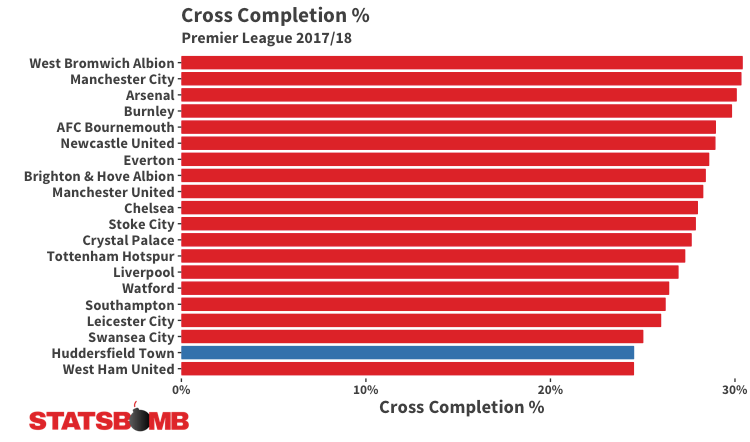 A lack of certainty about which players should be the first choice in the wide attacking positions was compounded by Elias Kachunga's two serious injuries which sidelined him for almost all of the second half of the season and although Rajiv van La Parra completed the fourth most dribbles per 90 in the league his end product and that of Tom Ince was lacking. Steve Mounie was tasked with the lone forward role and often found, on the rare occasions he got in behind the opposition defence, there were a lack of options in support. In fact, Huddersfield made the fewest successful passes inside the opposition box per match in the league. The passing options available in attacking areas did improve once Alex Pritchard was recruited in January 2018 to play in the central attacking midfield role but throughout the season there were clear issues in terms of creating quality chances for Mounie.
A lack of certainty about which players should be the first choice in the wide attacking positions was compounded by Elias Kachunga's two serious injuries which sidelined him for almost all of the second half of the season and although Rajiv van La Parra completed the fourth most dribbles per 90 in the league his end product and that of Tom Ince was lacking. Steve Mounie was tasked with the lone forward role and often found, on the rare occasions he got in behind the opposition defence, there were a lack of options in support. In fact, Huddersfield made the fewest successful passes inside the opposition box per match in the league. The passing options available in attacking areas did improve once Alex Pritchard was recruited in January 2018 to play in the central attacking midfield role but throughout the season there were clear issues in terms of creating quality chances for Mounie. 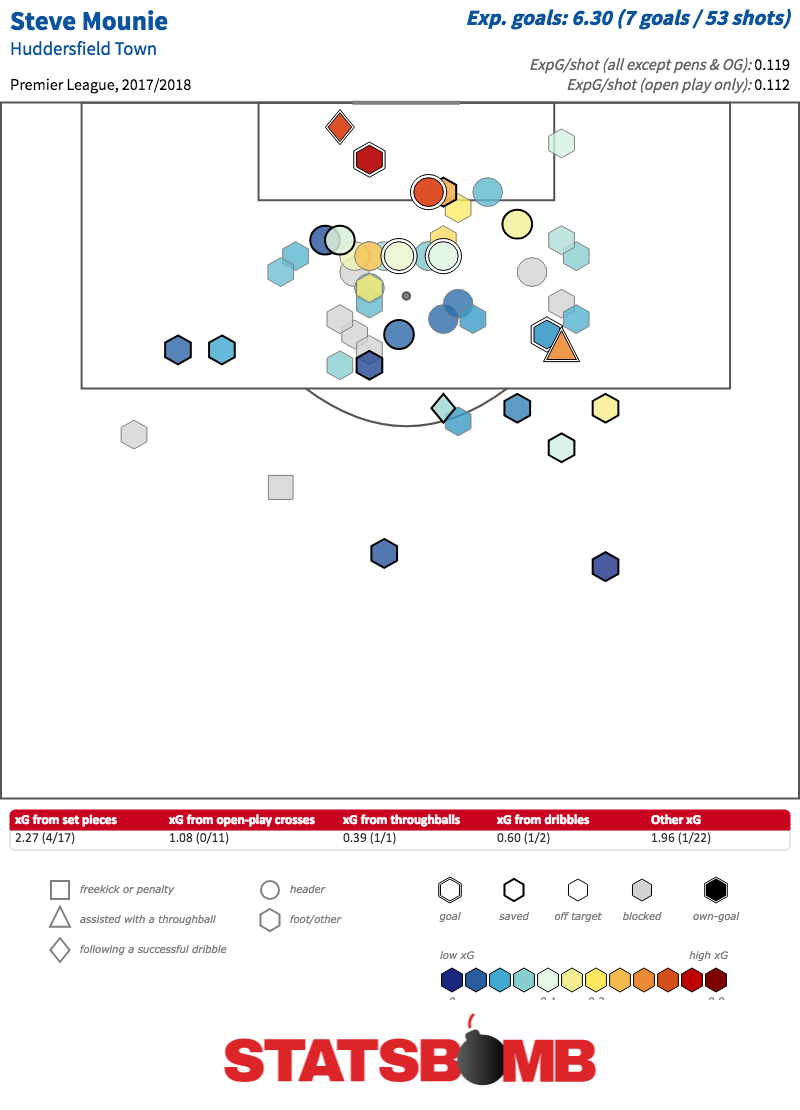 The barrel chested, blunt instrument of Laurent Depoitre sometimes joined Mounie in attack but he was mainly used against the top sides as an aerial outlet and defensive weapon and only managed to attempt just over one shot every 90 minutes. In addition to attackers not managing to take many shots, there were the aforementioned issues with where they were shooting from. Huddersfield Town took the eighth highest percentage of open play shots from outside the box in the league. Even when they were on the front foot, they struggled to create good opportunities and score goals. In their home tie against Swansea City in March 2018 they dominated possession after the opposition were reduced to ten men and took thirty shots to zero but drew 0-0.
The barrel chested, blunt instrument of Laurent Depoitre sometimes joined Mounie in attack but he was mainly used against the top sides as an aerial outlet and defensive weapon and only managed to attempt just over one shot every 90 minutes. In addition to attackers not managing to take many shots, there were the aforementioned issues with where they were shooting from. Huddersfield Town took the eighth highest percentage of open play shots from outside the box in the league. Even when they were on the front foot, they struggled to create good opportunities and score goals. In their home tie against Swansea City in March 2018 they dominated possession after the opposition were reduced to ten men and took thirty shots to zero but drew 0-0. 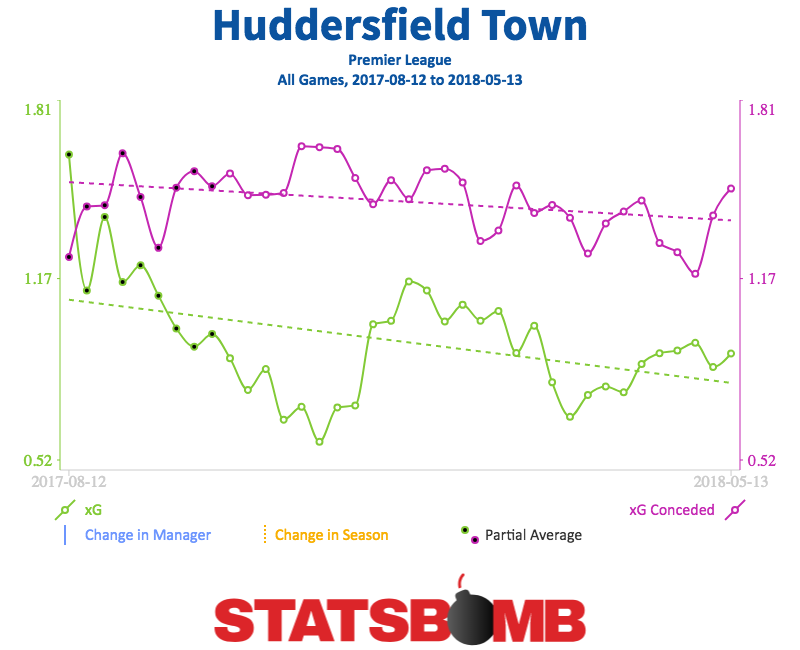 The question remains - what have Huddersfield done to move the needle on their inability to create good chances. They don't appear to have added much mobility to their central midfield in terms of starters, although Billings may be a first pick in more than the eight starts he managed last season. Ahead of central midfield, Ramadan Sobhi has joined from Stoke City and, while it remains to be seen how much more he can contribute than Ince who moved the other way, he is clearly talented and has a strong upside given he is only 21 years old. Finally, Adama Diakhaby has joined from Monaco. While it is a concern that he has been allowed to leave only one season after joining from Rennes he can play all across the front line and could be a strong threat running the channels. We may also see more of the promising attacking midfielder Abdelhamid Sabiri and Kachunga will return from injury.
The question remains - what have Huddersfield done to move the needle on their inability to create good chances. They don't appear to have added much mobility to their central midfield in terms of starters, although Billings may be a first pick in more than the eight starts he managed last season. Ahead of central midfield, Ramadan Sobhi has joined from Stoke City and, while it remains to be seen how much more he can contribute than Ince who moved the other way, he is clearly talented and has a strong upside given he is only 21 years old. Finally, Adama Diakhaby has joined from Monaco. While it is a concern that he has been allowed to leave only one season after joining from Rennes he can play all across the front line and could be a strong threat running the channels. We may also see more of the promising attacking midfielder Abdelhamid Sabiri and Kachunga will return from injury. 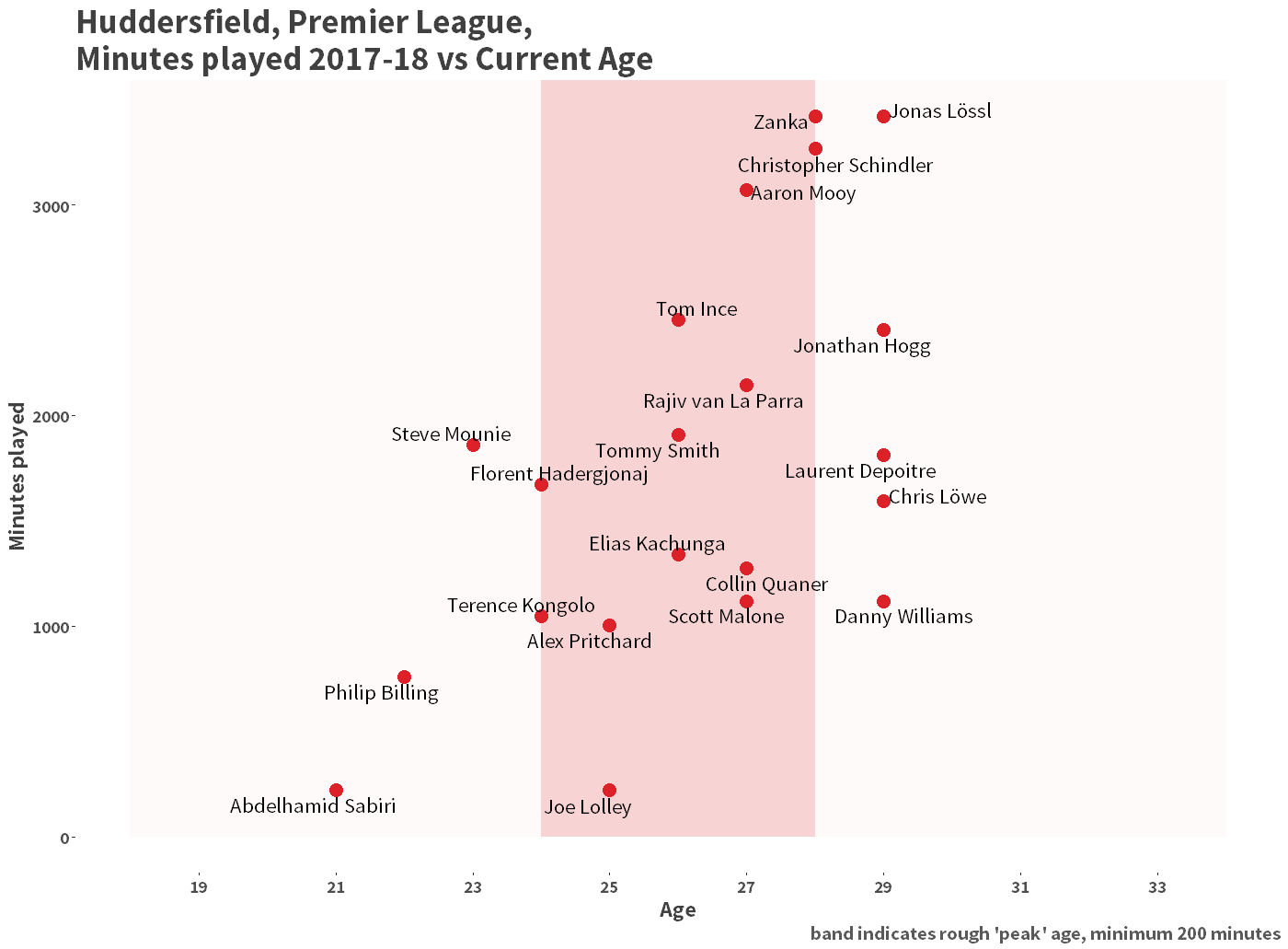 The outfield players that have arrived this summer are all, except Durm, 24 or younger. Huddersfield Town do have a young team and while having so many of their players in peak age range is clearly a positive there could be some concerns over a lack of experience especially once the new recruits are taken into account. Perhaps a move for an attacking midfielder with a bit more experience and clear end product such as Pablo Sarabia, currently in stalled contract negotiations at Sevilla FC and with a release clause of €18 million, or a high quality central midfielder like André-Frank Zambo Anguissa, who newly promoted Fulham acquired from Marseilles, could have really addressed the deficiencies in the starting eleven but Wagner is certainly a dedicated coach and maybe he can help some of his existing players to have more of an impact offensively this season.
The outfield players that have arrived this summer are all, except Durm, 24 or younger. Huddersfield Town do have a young team and while having so many of their players in peak age range is clearly a positive there could be some concerns over a lack of experience especially once the new recruits are taken into account. Perhaps a move for an attacking midfielder with a bit more experience and clear end product such as Pablo Sarabia, currently in stalled contract negotiations at Sevilla FC and with a release clause of €18 million, or a high quality central midfielder like André-Frank Zambo Anguissa, who newly promoted Fulham acquired from Marseilles, could have really addressed the deficiencies in the starting eleven but Wagner is certainly a dedicated coach and maybe he can help some of his existing players to have more of an impact offensively this season. 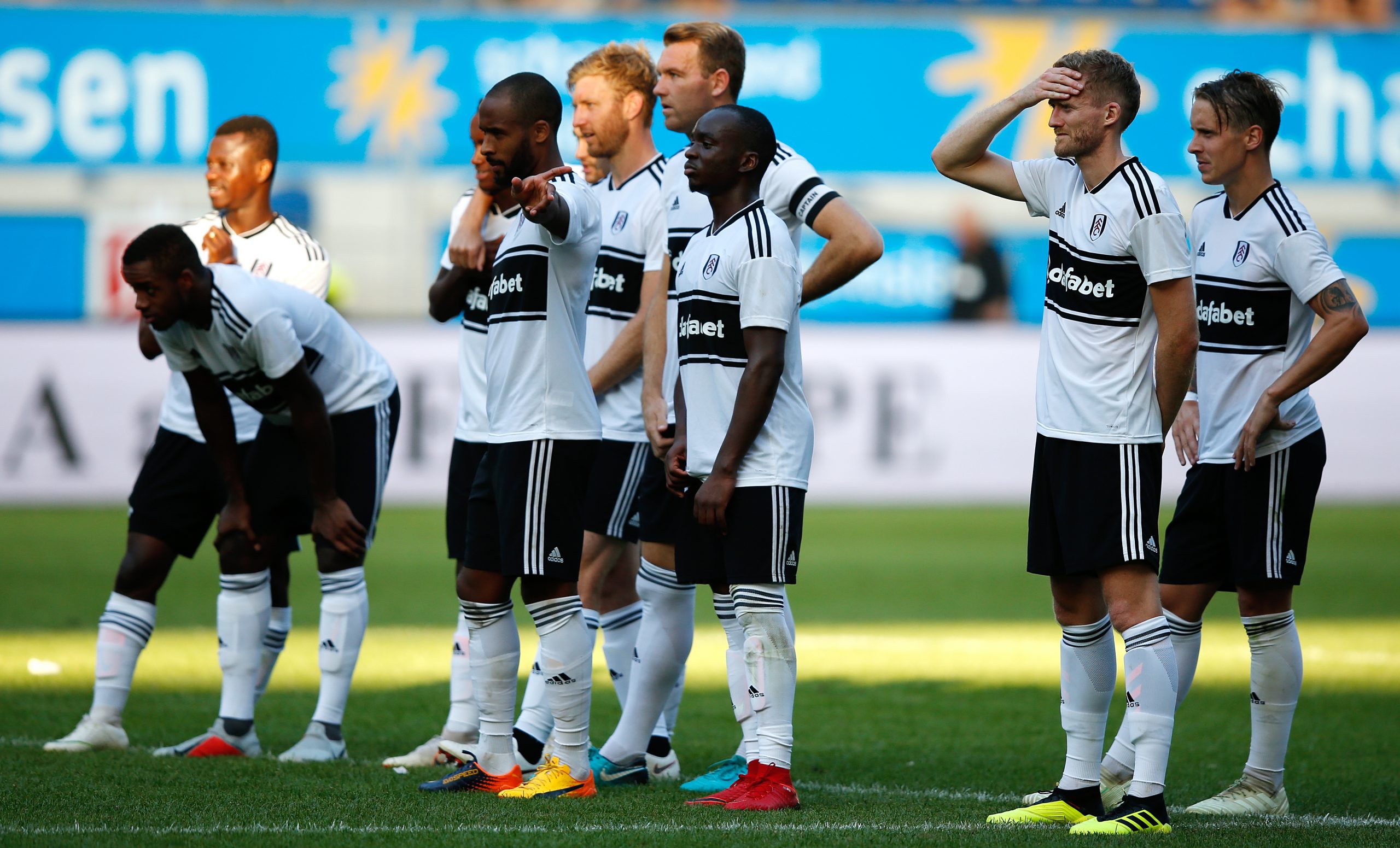
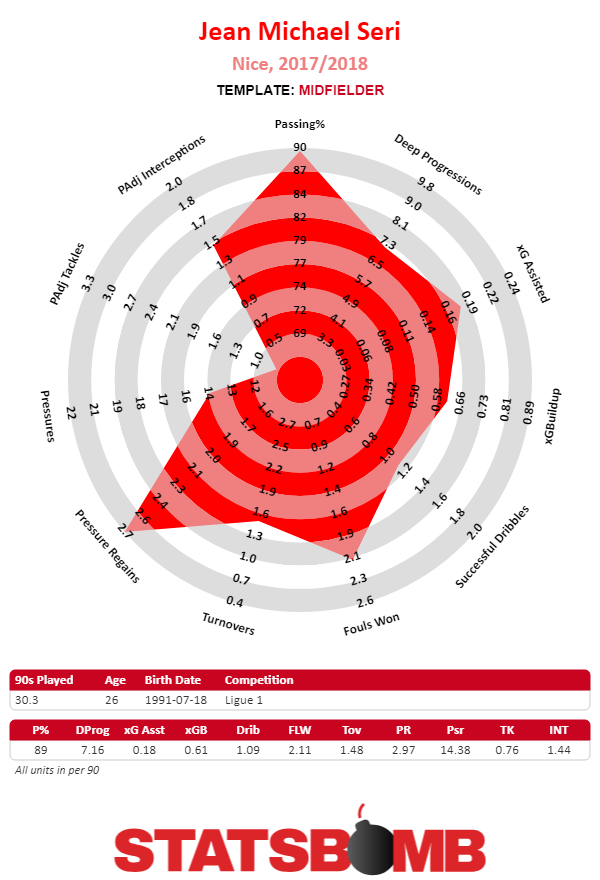
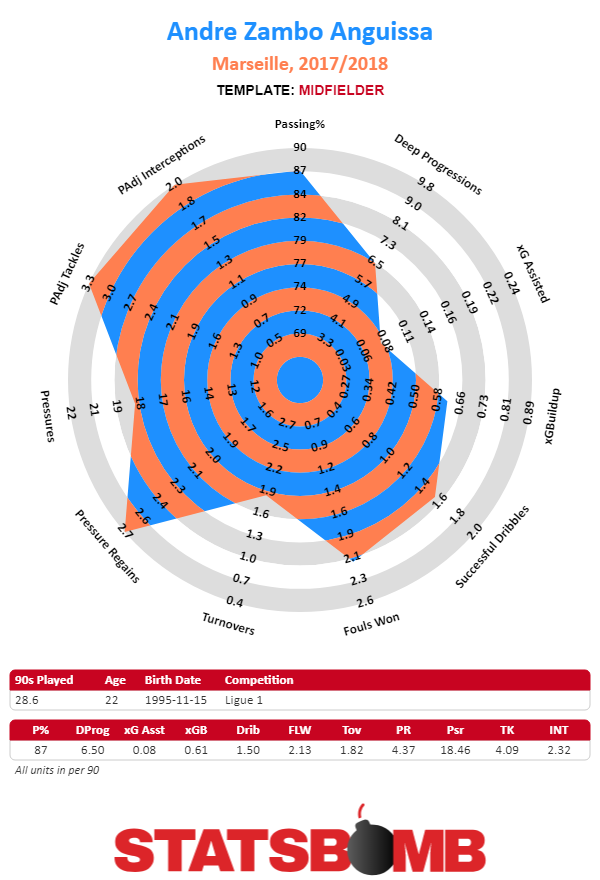
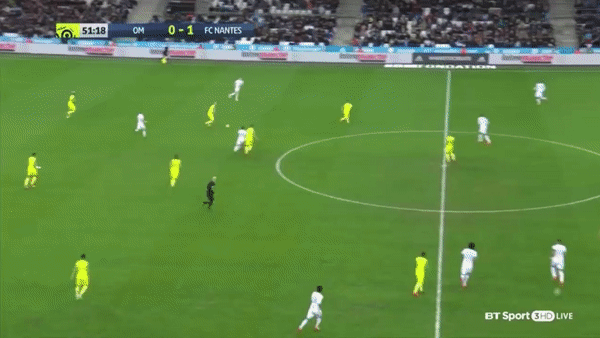
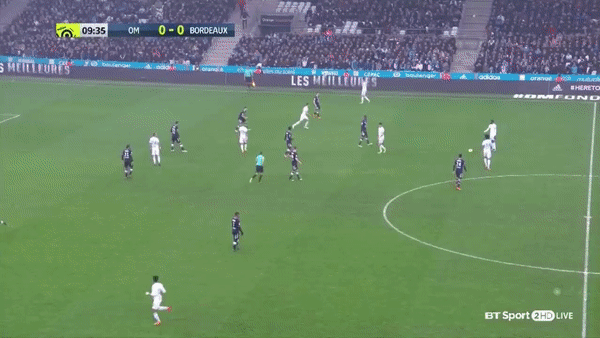
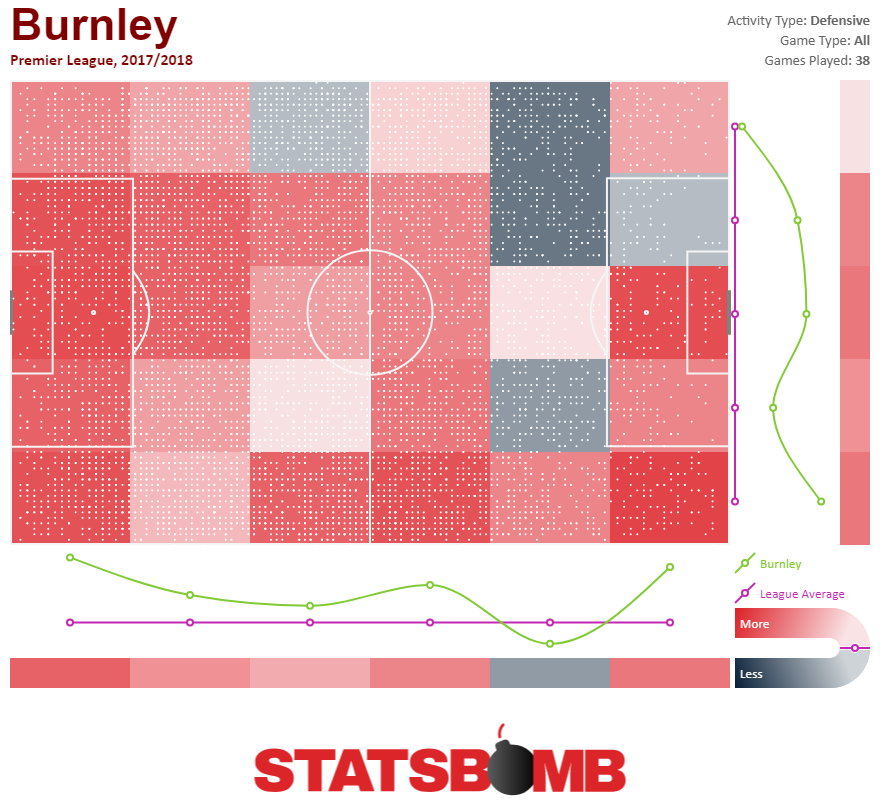
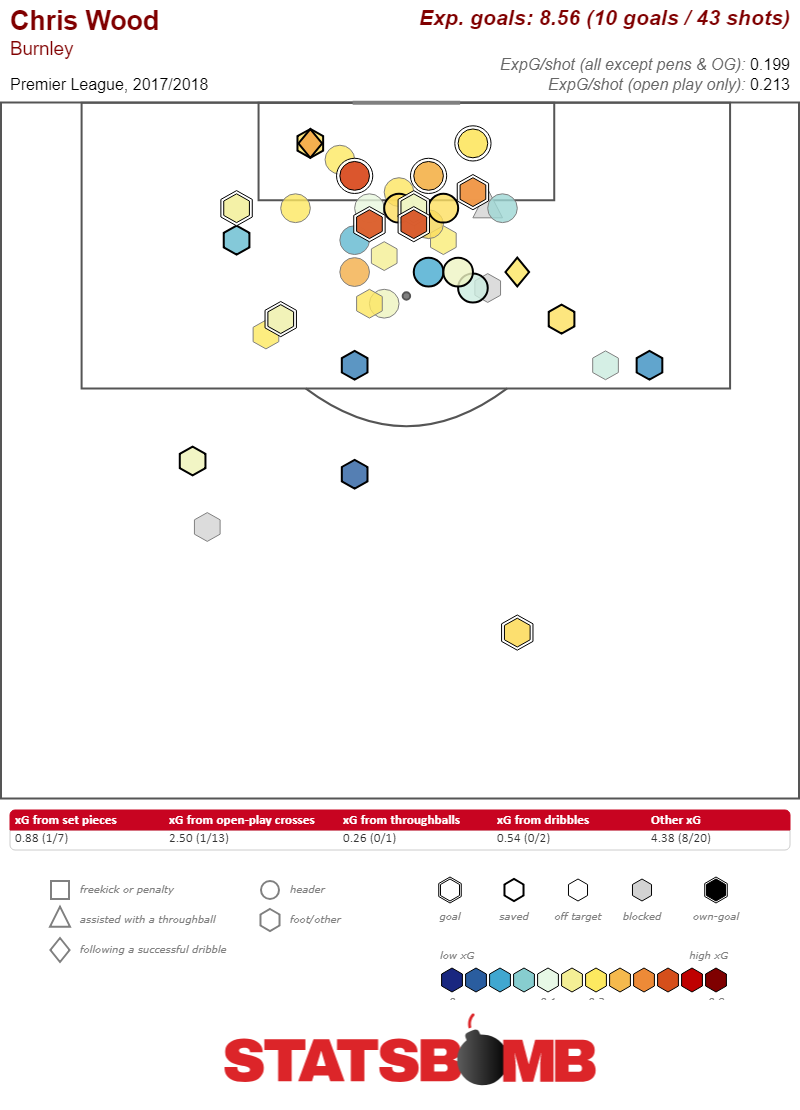 While Wood’s numbers were very good, there was a drop-off in goal-scoring contribution across the rest of the squad; Ashley Barnes and Welsh legend Sam Vokes were contributing at a 1 in 3 game rate in both expectation and actual output, with the midfield ranks providing limited goal-scoring support. Wood’s medial ligament injury just before Christmas and two-month absence coincided with Burnley’s attack dropping below one expected goal per game. This was compounded by a poor run on the defensive side as well, leading to them collecting just 4 points in 9 games with Wood out of the starting eleven.
While Wood’s numbers were very good, there was a drop-off in goal-scoring contribution across the rest of the squad; Ashley Barnes and Welsh legend Sam Vokes were contributing at a 1 in 3 game rate in both expectation and actual output, with the midfield ranks providing limited goal-scoring support. Wood’s medial ligament injury just before Christmas and two-month absence coincided with Burnley’s attack dropping below one expected goal per game. This was compounded by a poor run on the defensive side as well, leading to them collecting just 4 points in 9 games with Wood out of the starting eleven. 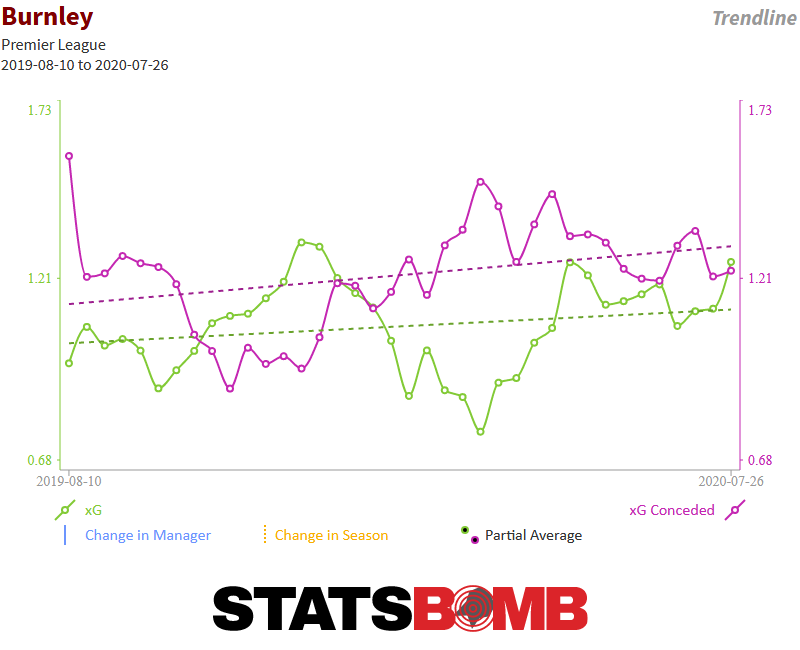
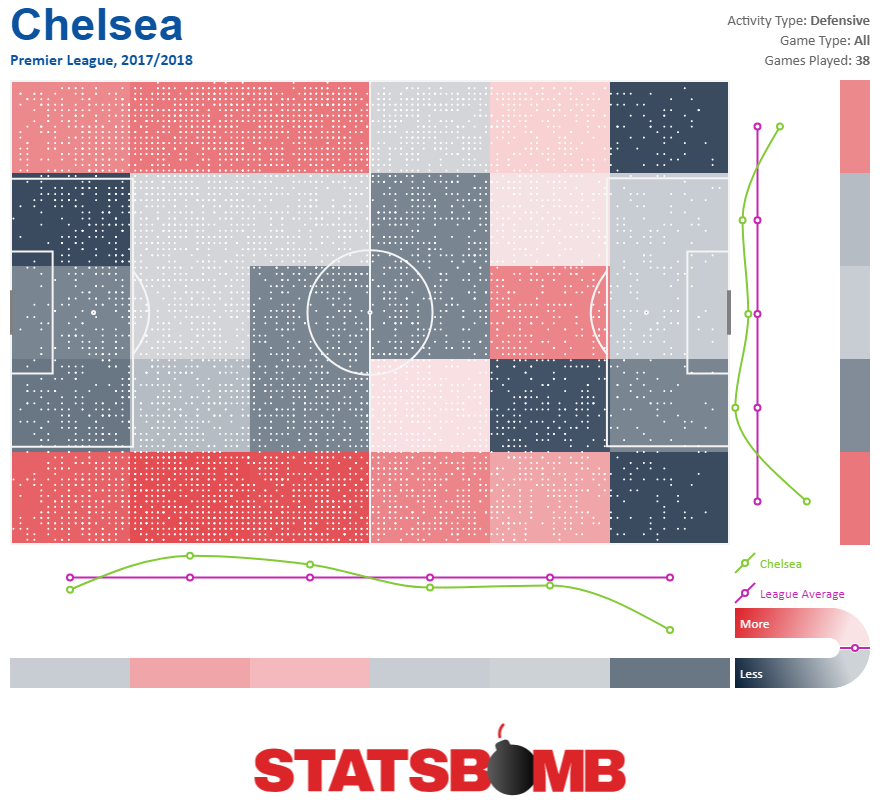
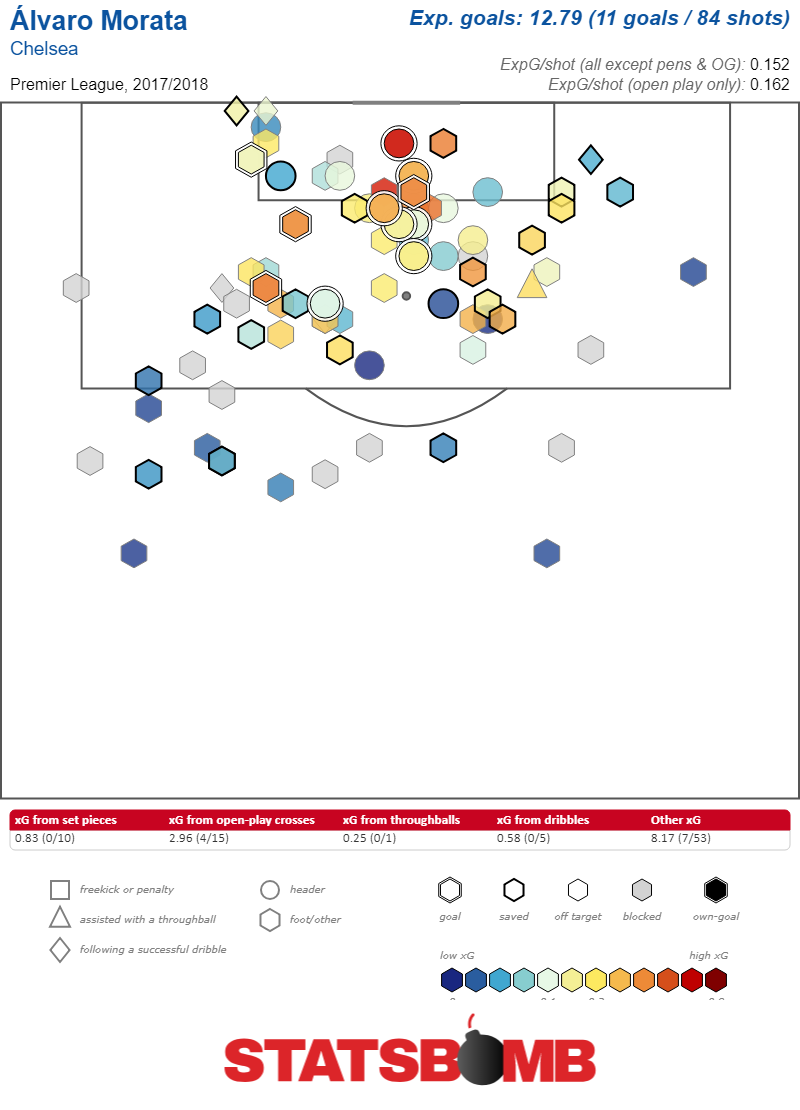 His xG per 90 of 0.53 was fifth among all players that played over 1200 minutes, which might seem comical given how he walked out of last season with a reputation for missing the net a lot. But his scoring record was actually quite respectable. Those 11 goals came in only a little over 2100 minutes, giving him a goal scoring rate of 0.45 was ninth among players with over 1200 minutes. On a minute for minute basis Morata’s scoring was fine if slightly disappointing, but he created shots opportunities for himself at a rate more than adequate for a striker at a top team. The problem with Morata is that all of his success was frontloaded. He scored his goals early…
His xG per 90 of 0.53 was fifth among all players that played over 1200 minutes, which might seem comical given how he walked out of last season with a reputation for missing the net a lot. But his scoring record was actually quite respectable. Those 11 goals came in only a little over 2100 minutes, giving him a goal scoring rate of 0.45 was ninth among players with over 1200 minutes. On a minute for minute basis Morata’s scoring was fine if slightly disappointing, but he created shots opportunities for himself at a rate more than adequate for a striker at a top team. The problem with Morata is that all of his success was frontloaded. He scored his goals early… 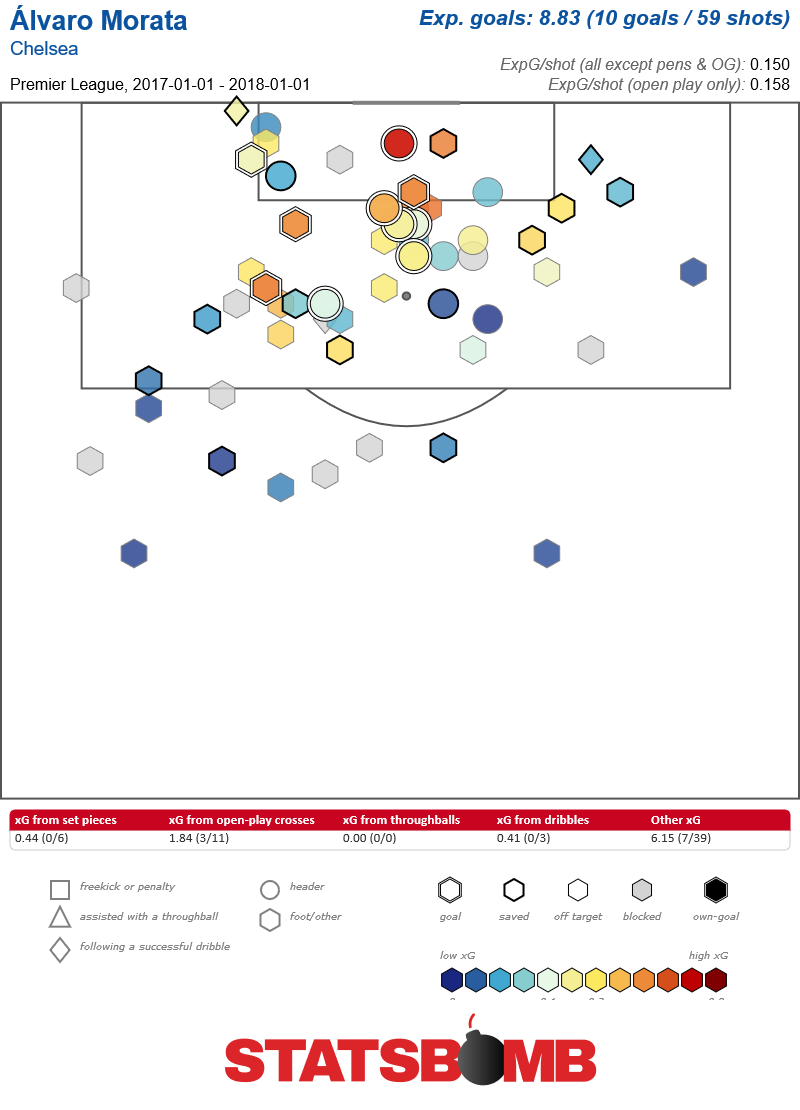 Then limped to the finish line.
Then limped to the finish line. 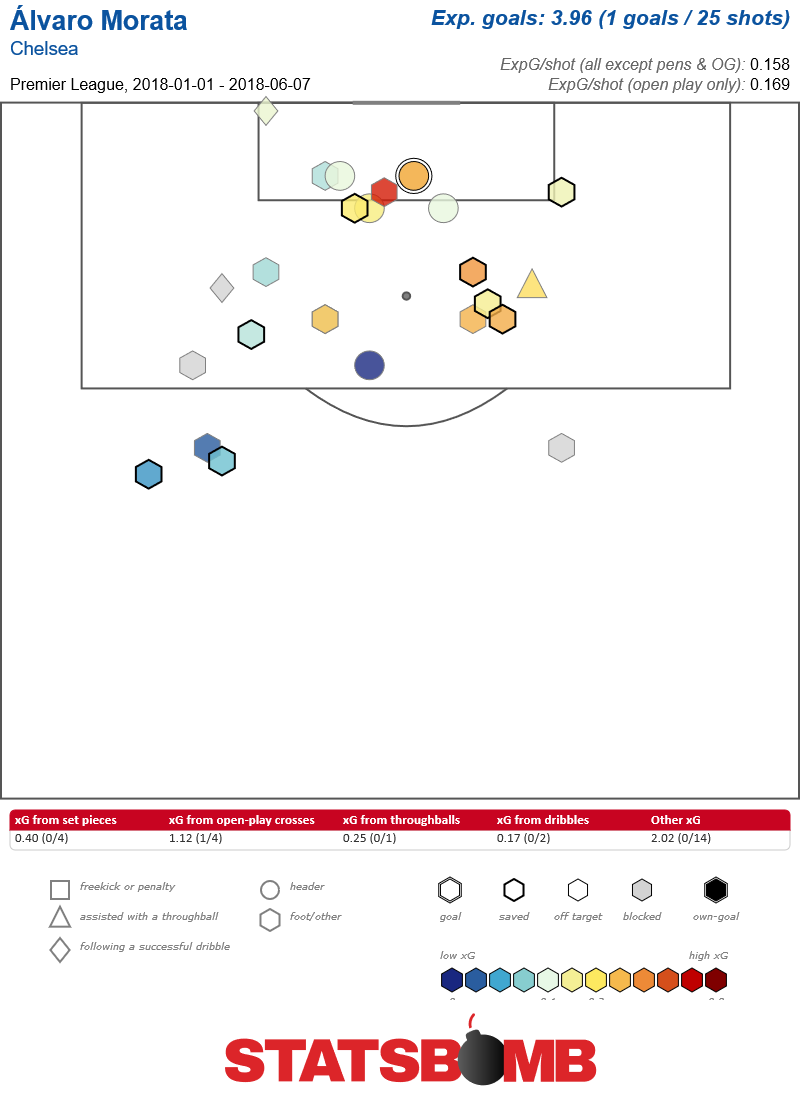 A healthy and productive Morata will likely be better next year than last, and should be able to thrive in a Sarri side that’s interested in using the midfield to play through opponents. And what a midfield it is. Chelsea added Jorginho from Sarri’s old club Napoli and Mateo Kovacic on loan from Real Madrid. They’ll partner with N’Golo Kante, the best defensive player in the world, to contend for being one of the strongest midfield units in the game. Napoli is extremely committed to moving the ball into the final third and using possession to attack their opponents. They had by far the most deep completions of any team in Serie A last season. They are reluctant crossers of the ball, and use lots of midfield movement and interchanging to pry open spaces from their base 4-3-3 system. Adding Kovacic and Jorginho means that all three of Chelsea’s midfielders (assuming that’s the starting unit) will be able to cover loads of ground. Kante’s presence means his two partners will have to worry less about getting caught up field, and both will be able to attack the penalty box when the situation calls for it. Courtois’ replacement in goal is also, in an odd way, motivated by Sarri’s attacking style. Kepa Arrizabalaga arrives from Athletic Bilbao with a reputation for being good with the ball at his feet, and an excellent shot stopper. Those are the kinds of skills necessary in a system designed to play on the front foot. While Courtois was perfectly suited for commanding a crowded area, shutting down crosses and making himself big in front of goal when necessary, Kepa’s remit will be different. He’ll have much more space to command, much more passing to pull off, and in general he’ll likely face a difference profile of shot.
A healthy and productive Morata will likely be better next year than last, and should be able to thrive in a Sarri side that’s interested in using the midfield to play through opponents. And what a midfield it is. Chelsea added Jorginho from Sarri’s old club Napoli and Mateo Kovacic on loan from Real Madrid. They’ll partner with N’Golo Kante, the best defensive player in the world, to contend for being one of the strongest midfield units in the game. Napoli is extremely committed to moving the ball into the final third and using possession to attack their opponents. They had by far the most deep completions of any team in Serie A last season. They are reluctant crossers of the ball, and use lots of midfield movement and interchanging to pry open spaces from their base 4-3-3 system. Adding Kovacic and Jorginho means that all three of Chelsea’s midfielders (assuming that’s the starting unit) will be able to cover loads of ground. Kante’s presence means his two partners will have to worry less about getting caught up field, and both will be able to attack the penalty box when the situation calls for it. Courtois’ replacement in goal is also, in an odd way, motivated by Sarri’s attacking style. Kepa Arrizabalaga arrives from Athletic Bilbao with a reputation for being good with the ball at his feet, and an excellent shot stopper. Those are the kinds of skills necessary in a system designed to play on the front foot. While Courtois was perfectly suited for commanding a crowded area, shutting down crosses and making himself big in front of goal when necessary, Kepa’s remit will be different. He’ll have much more space to command, much more passing to pull off, and in general he’ll likely face a difference profile of shot. 